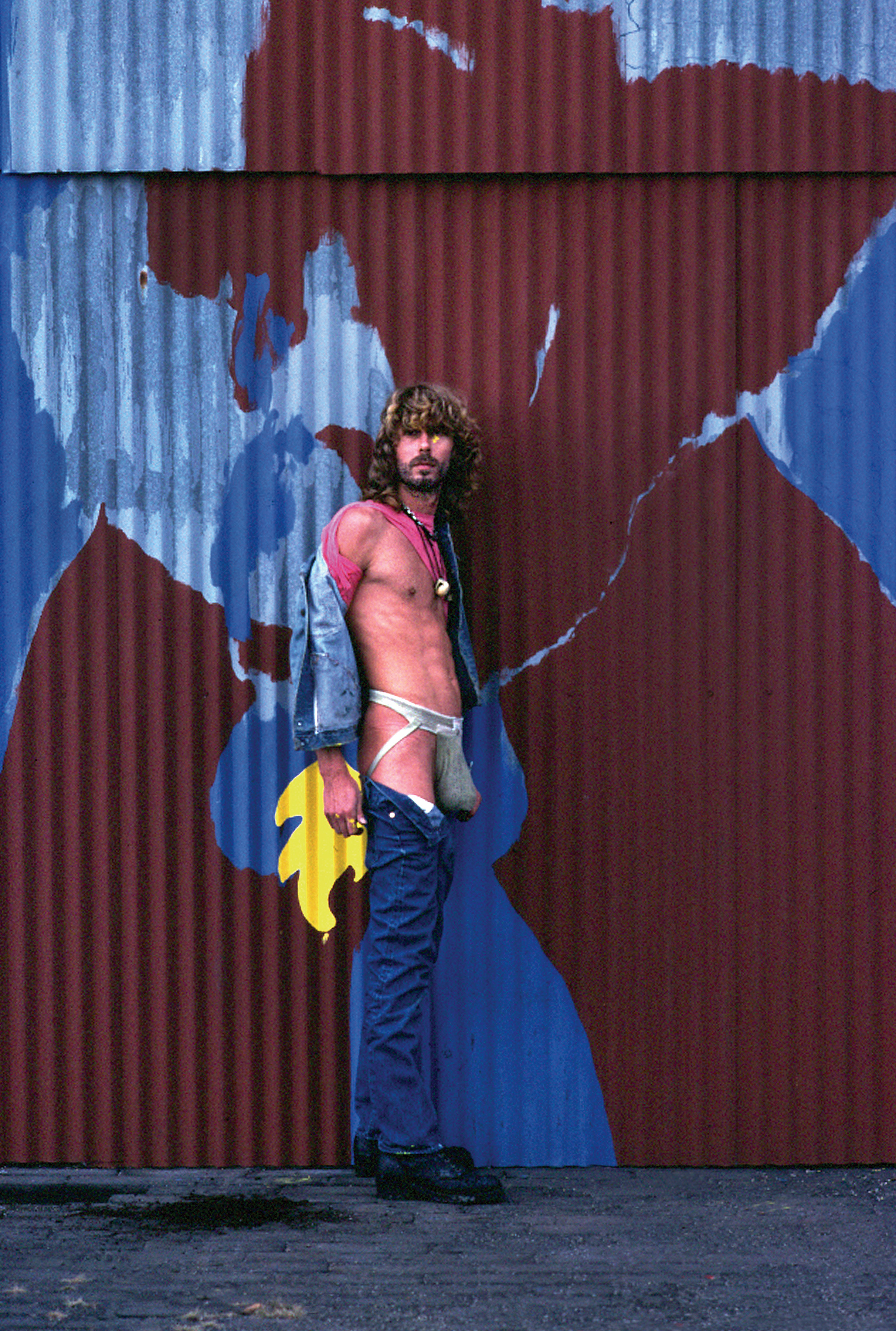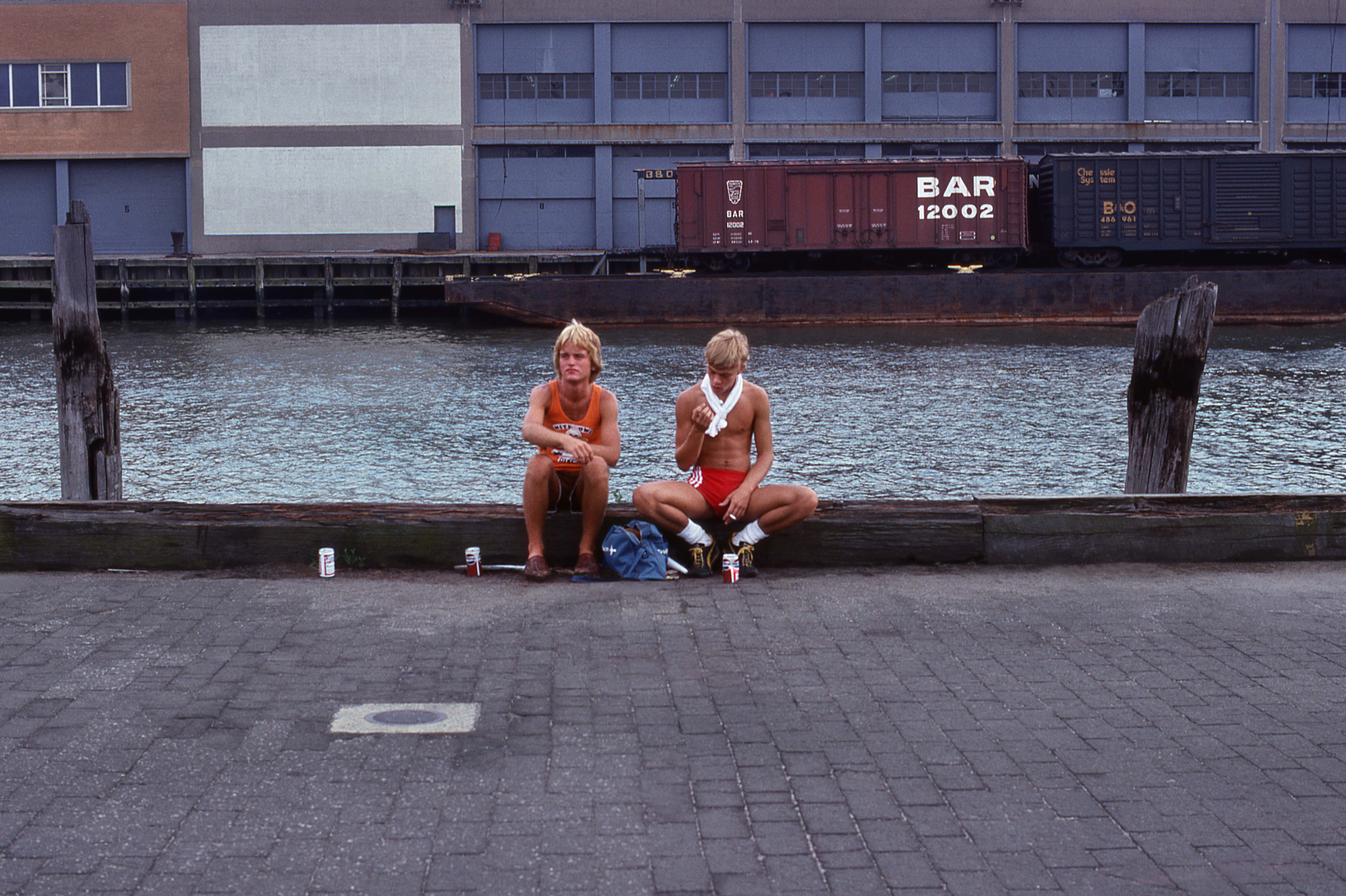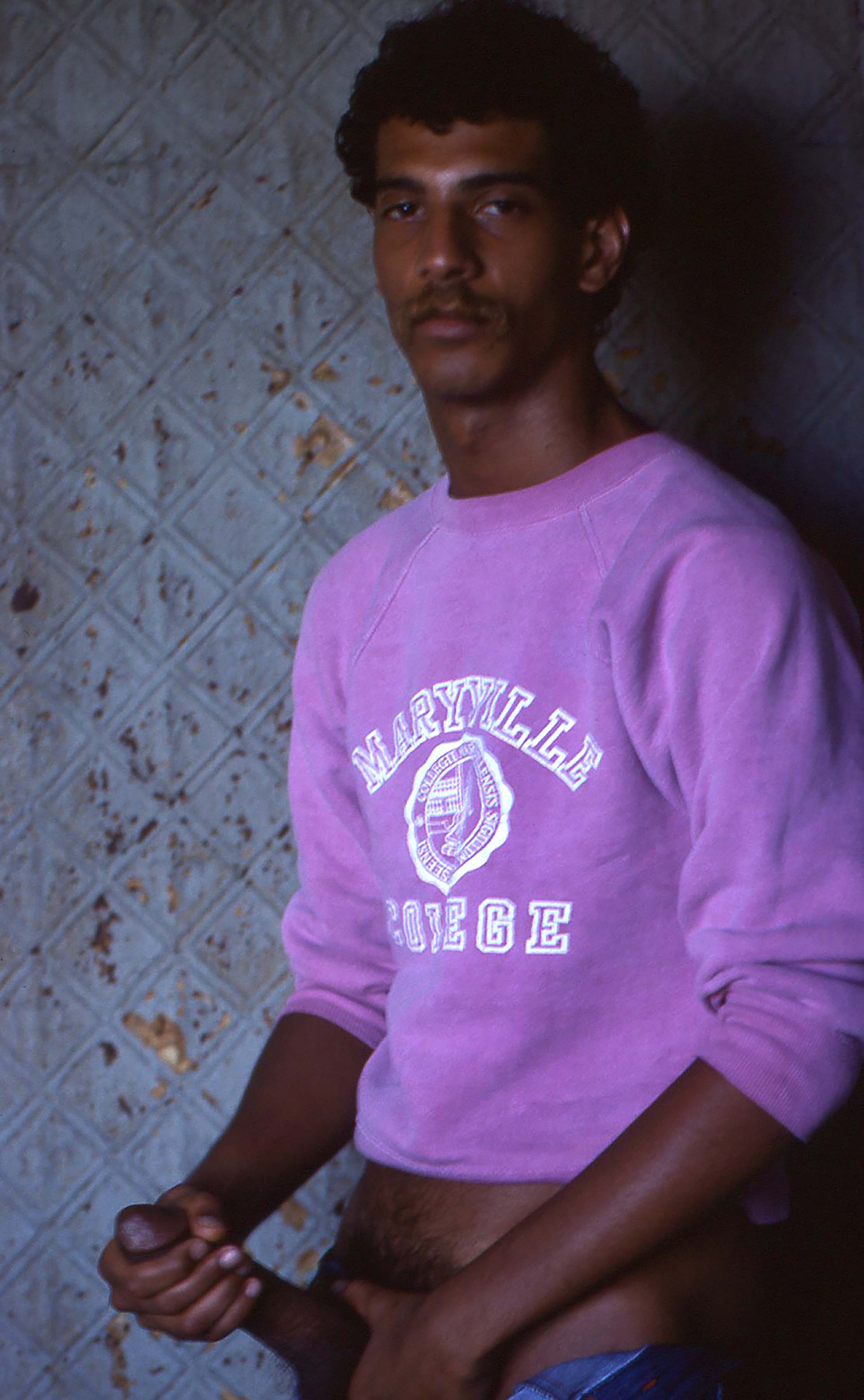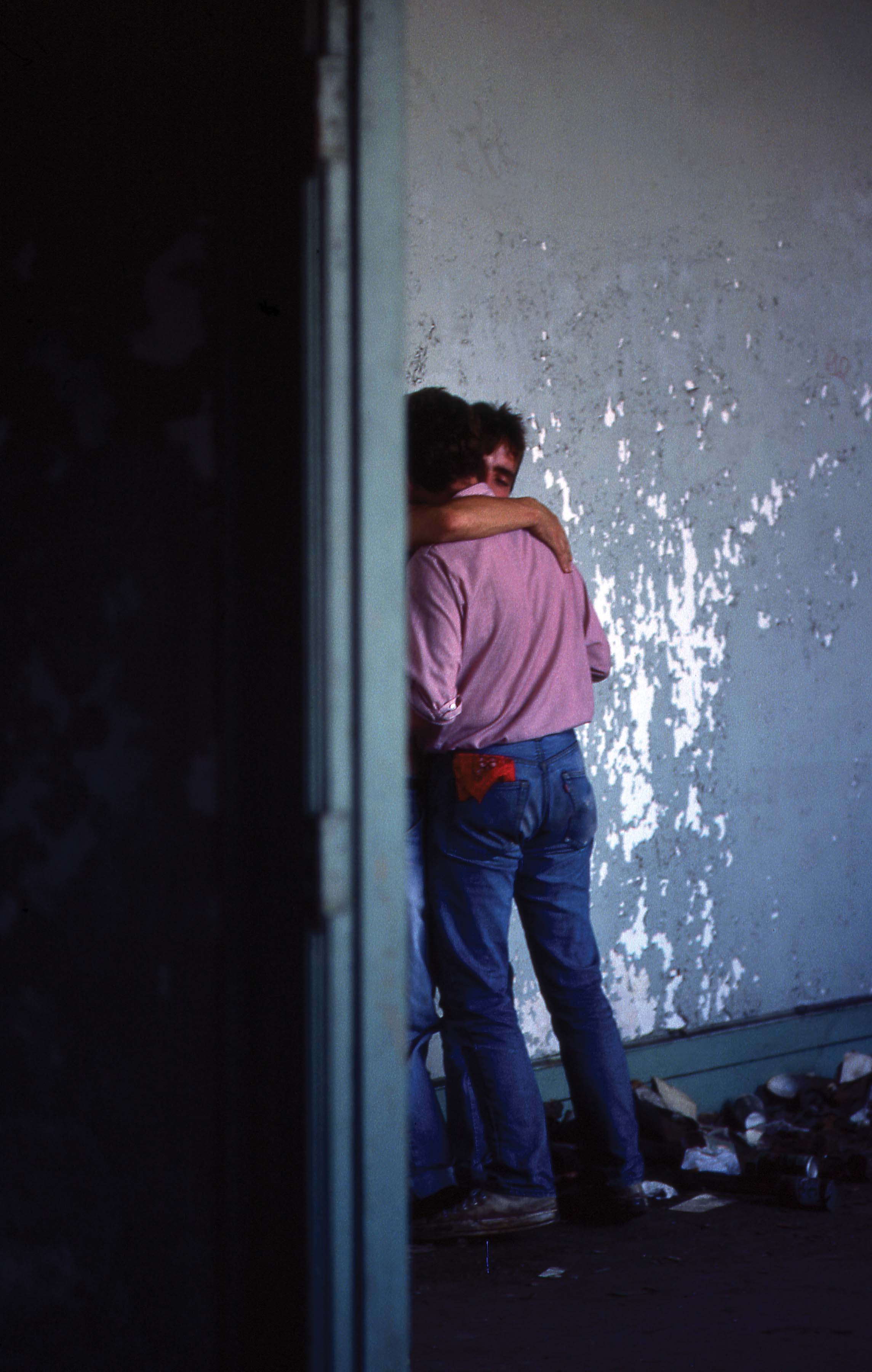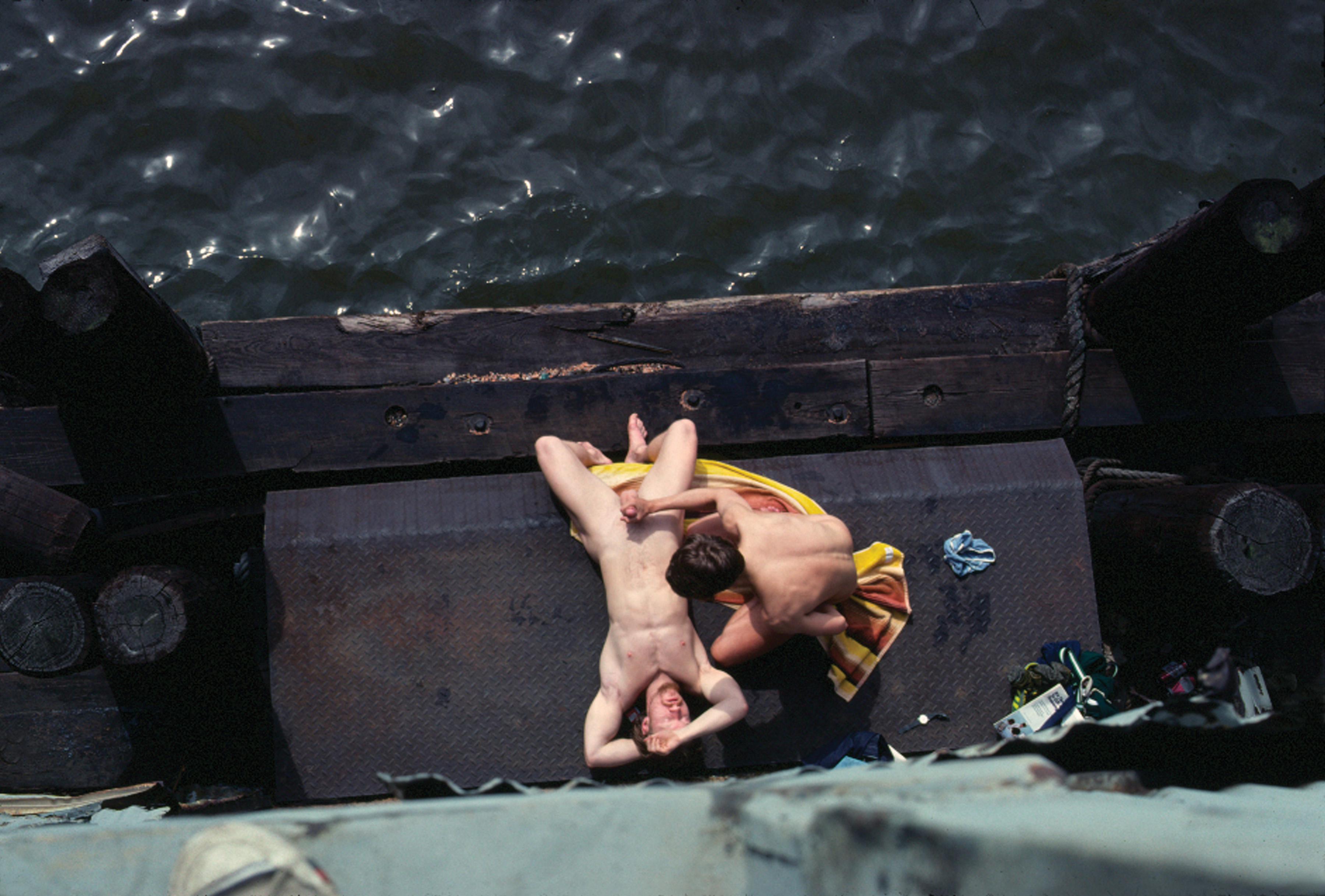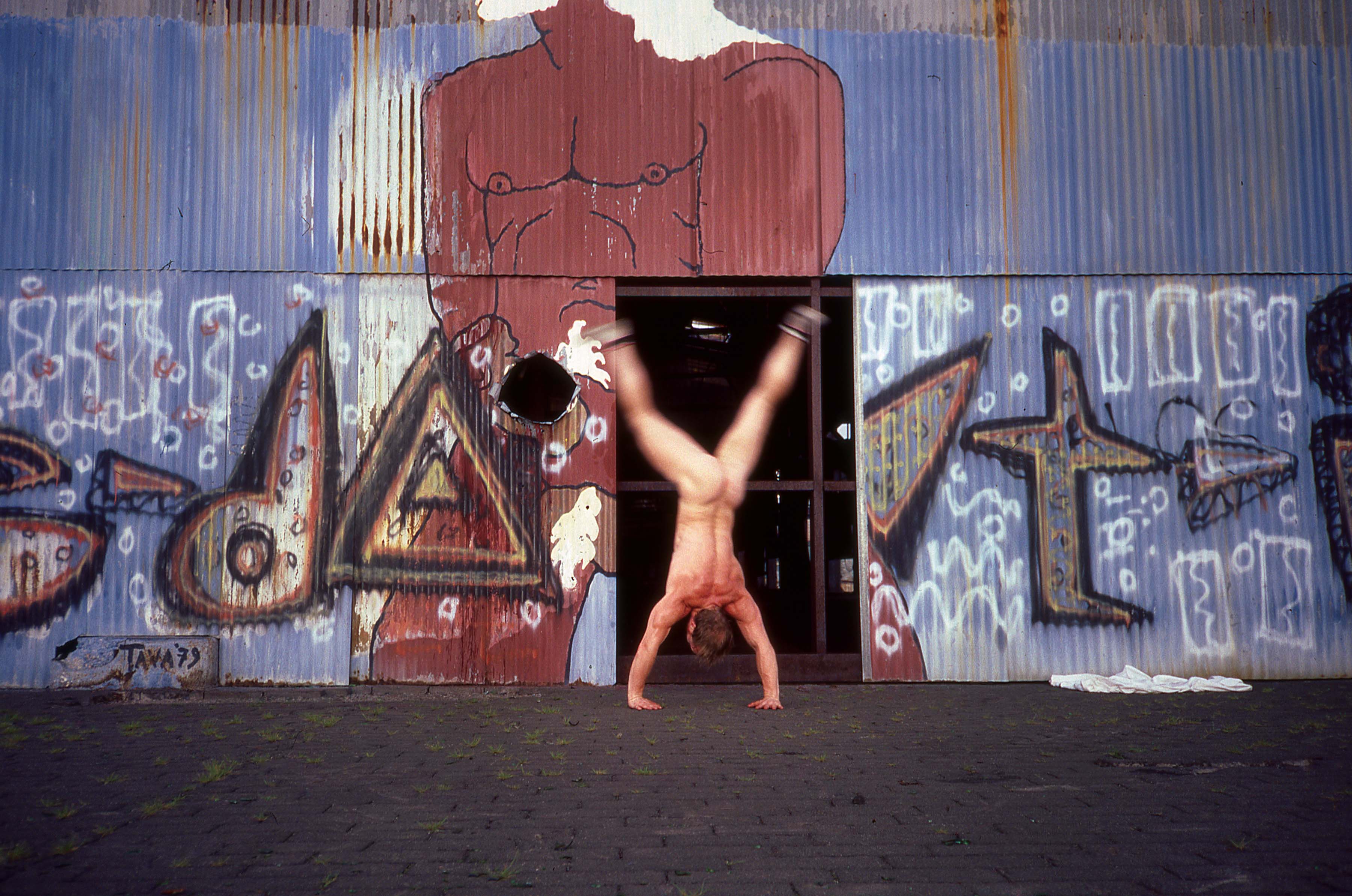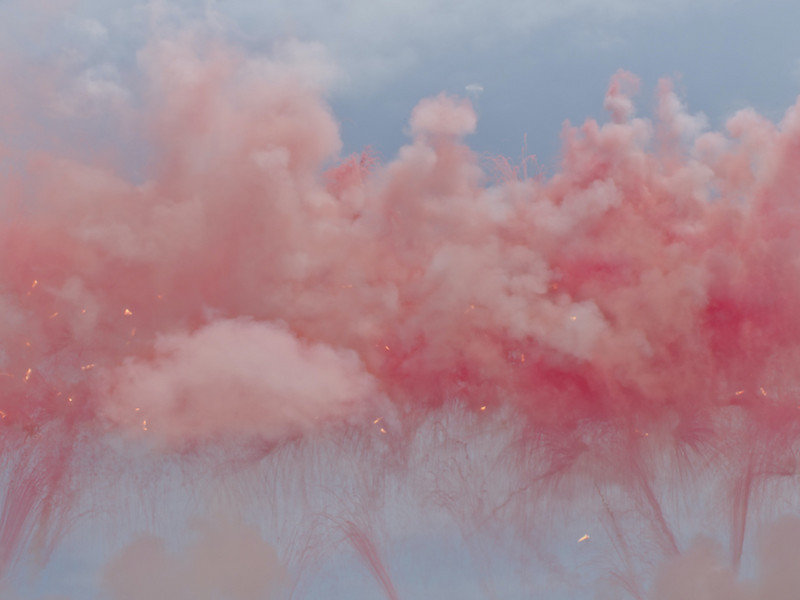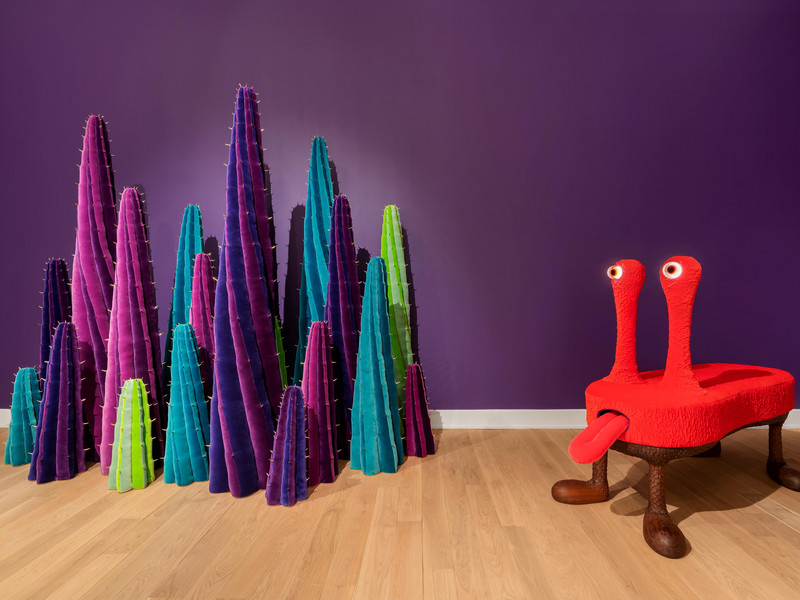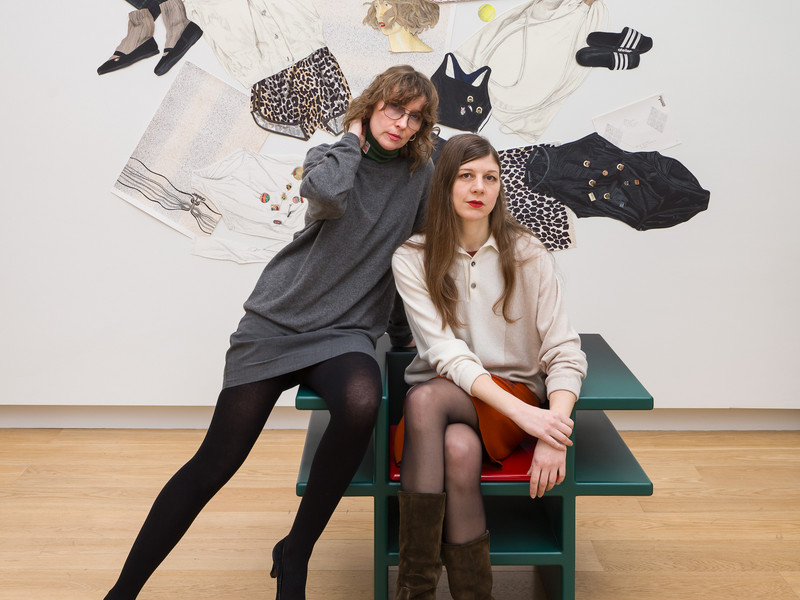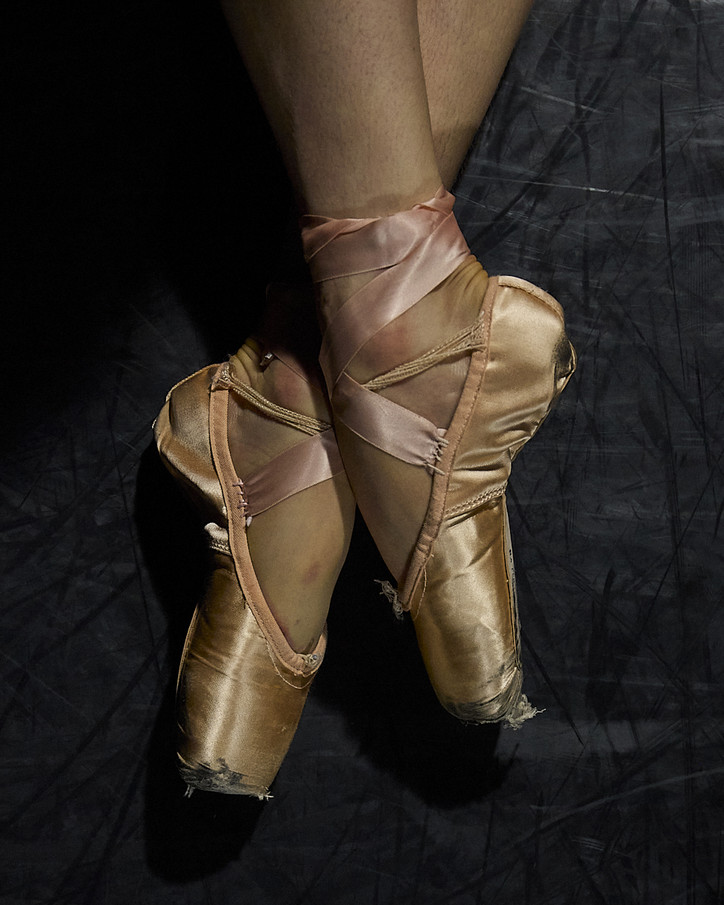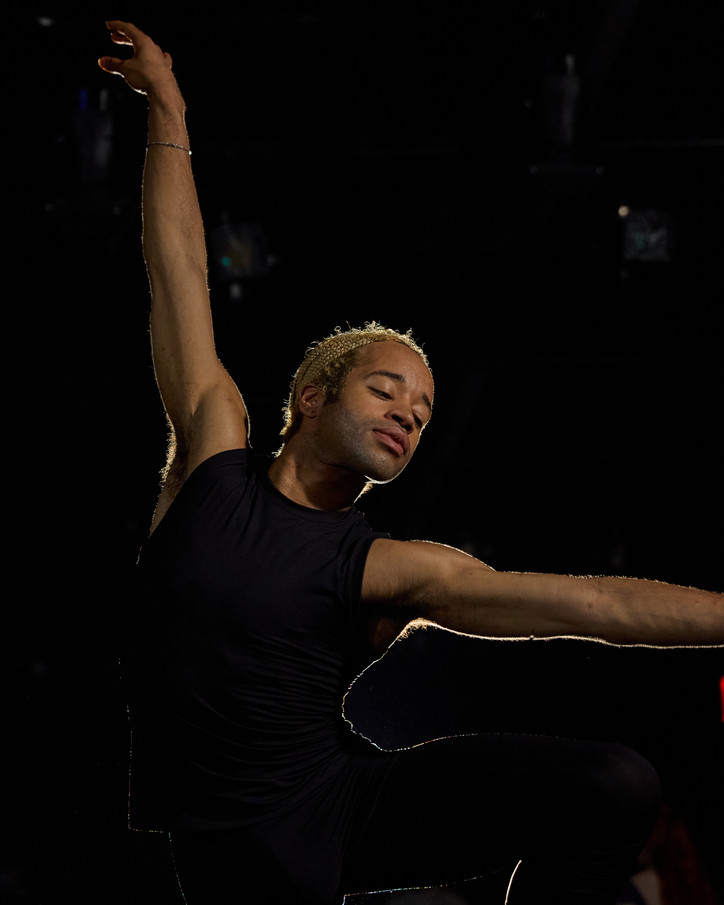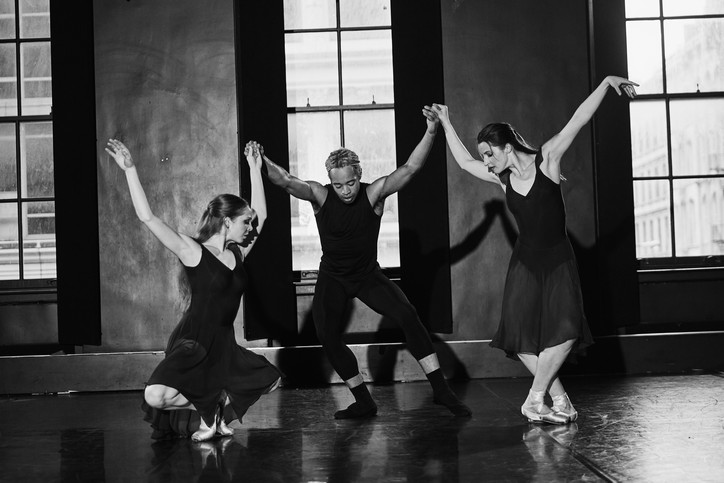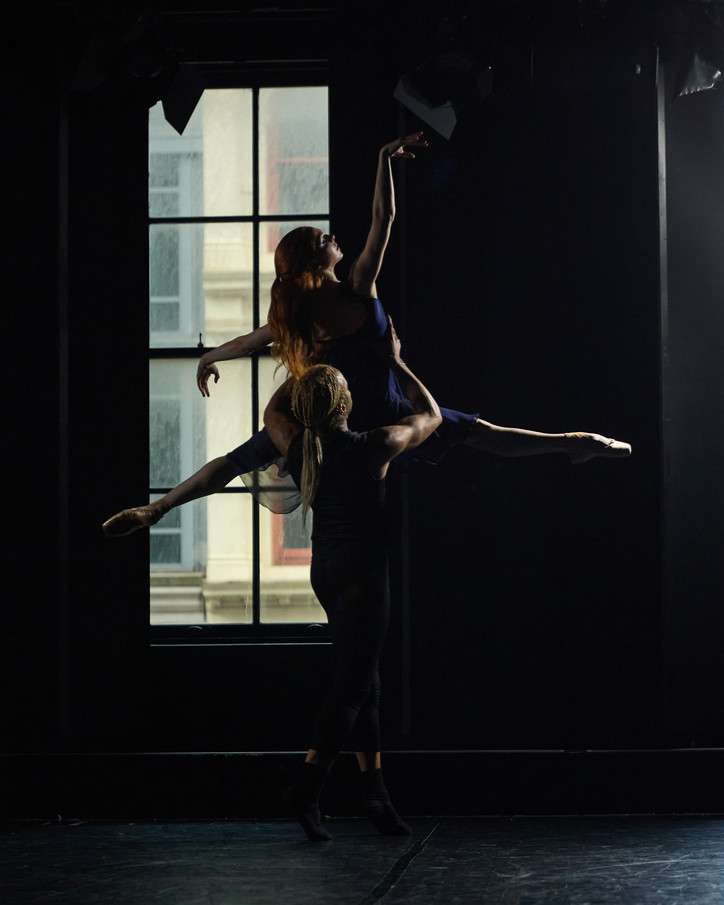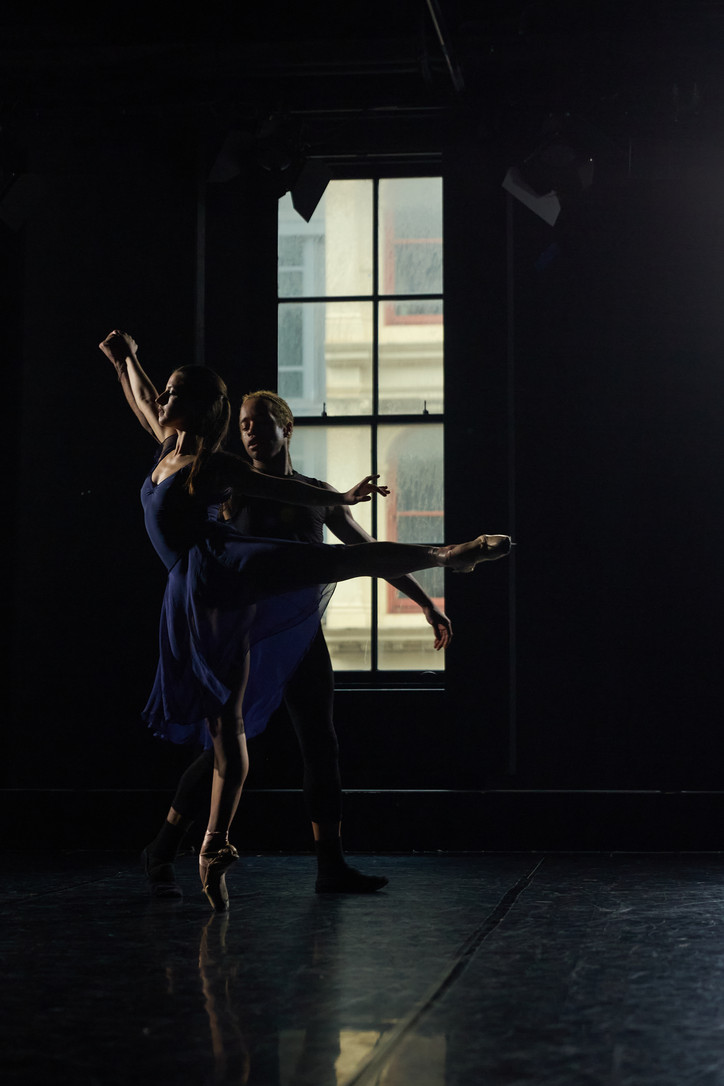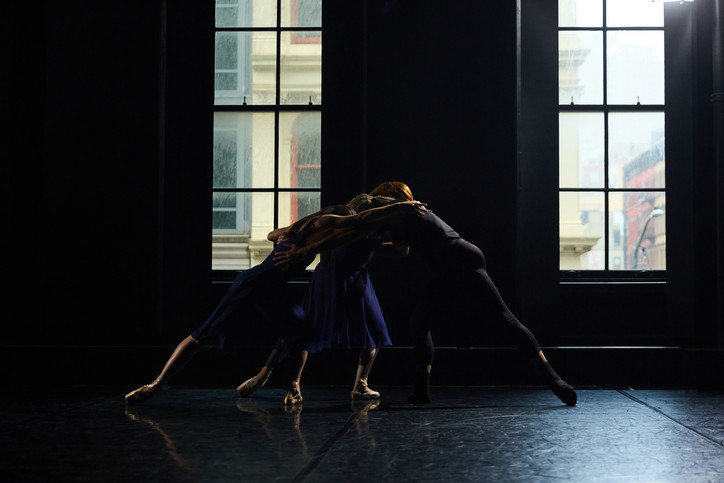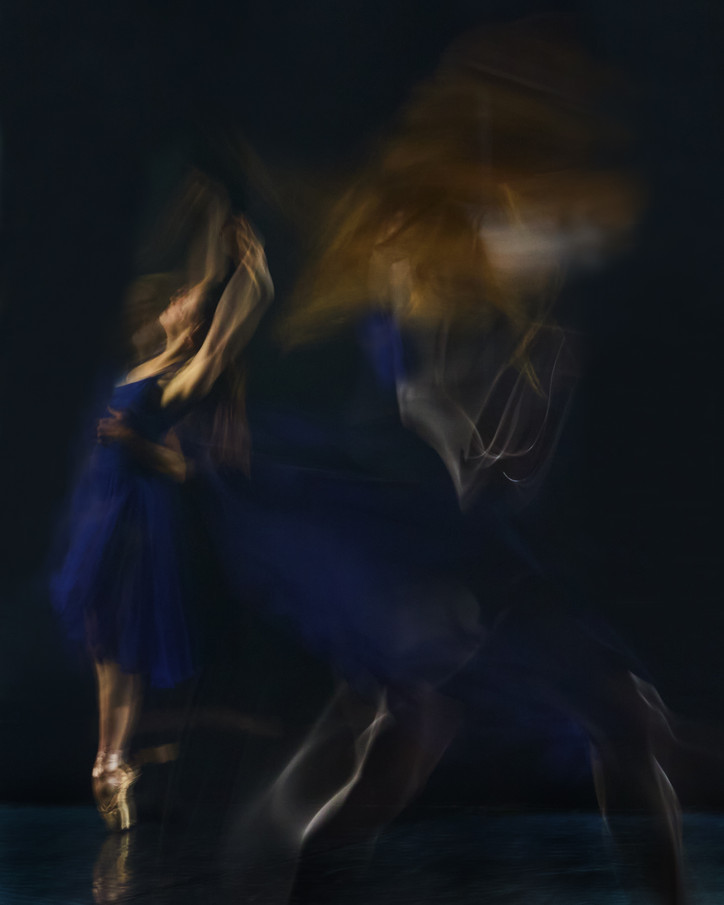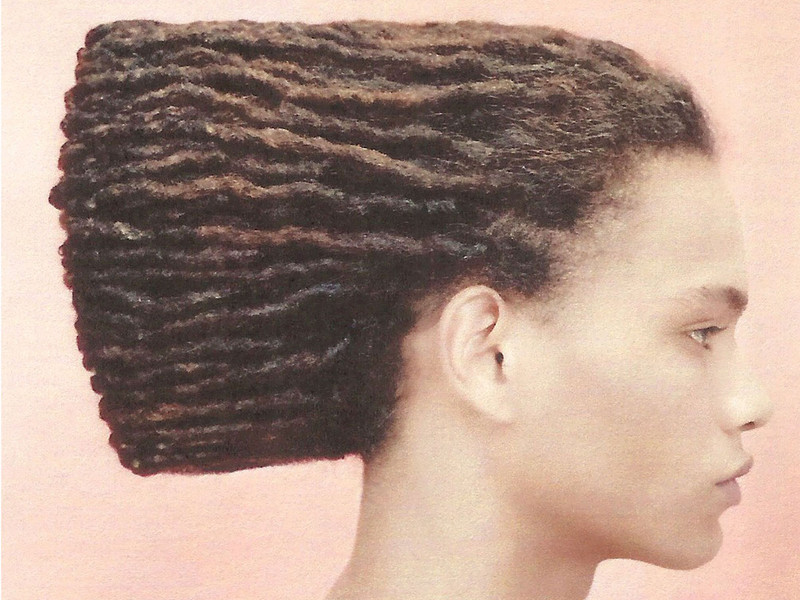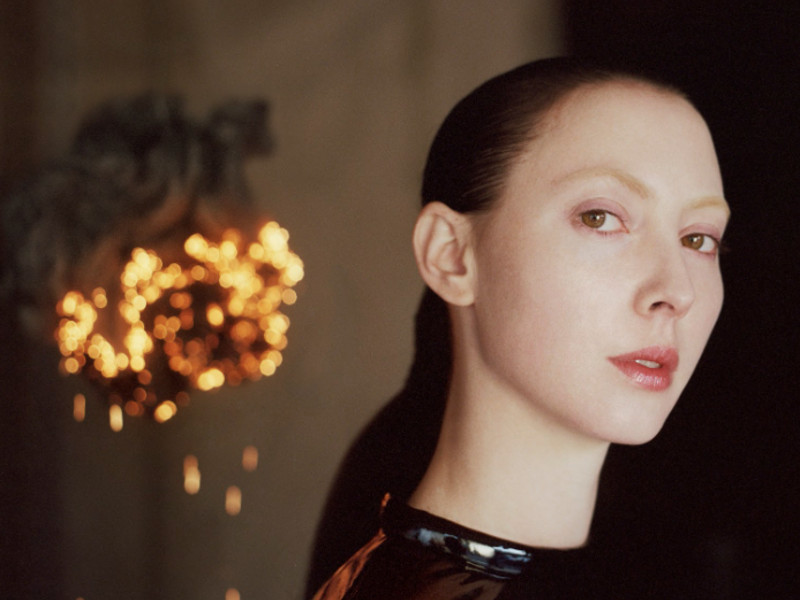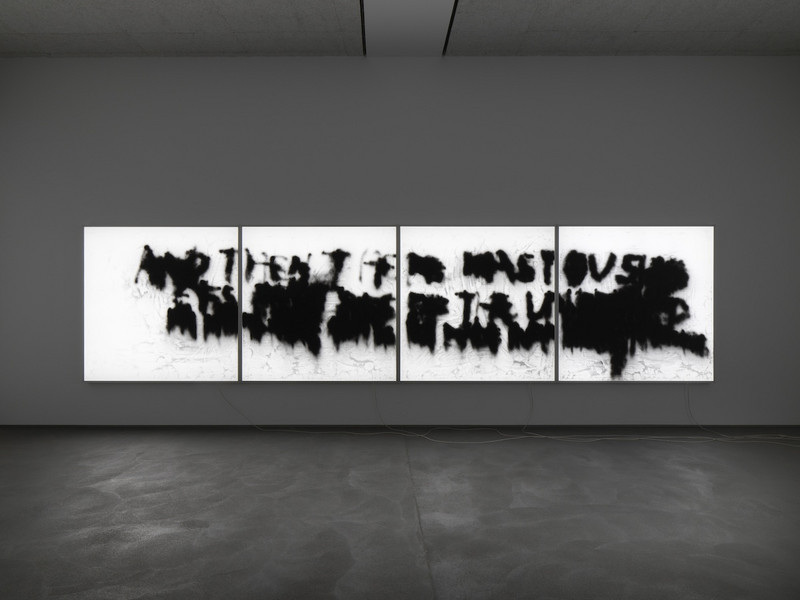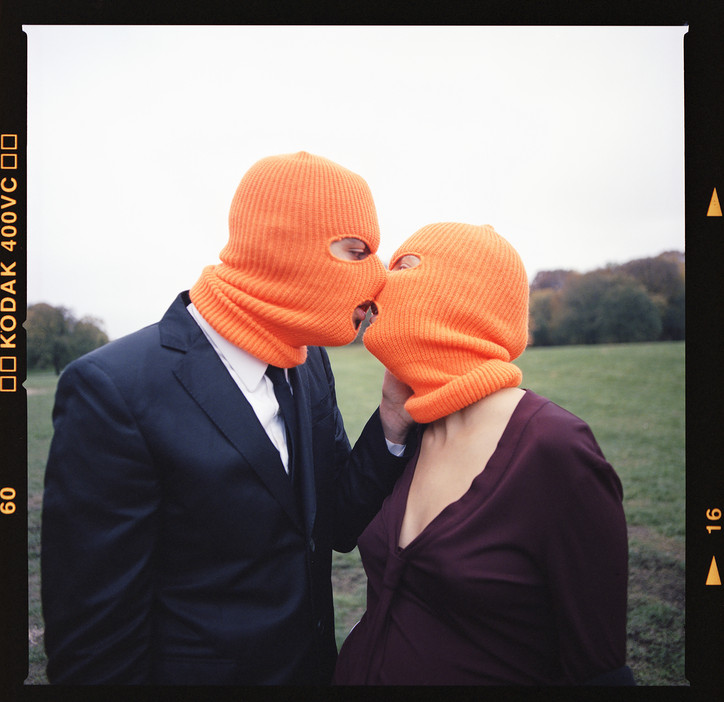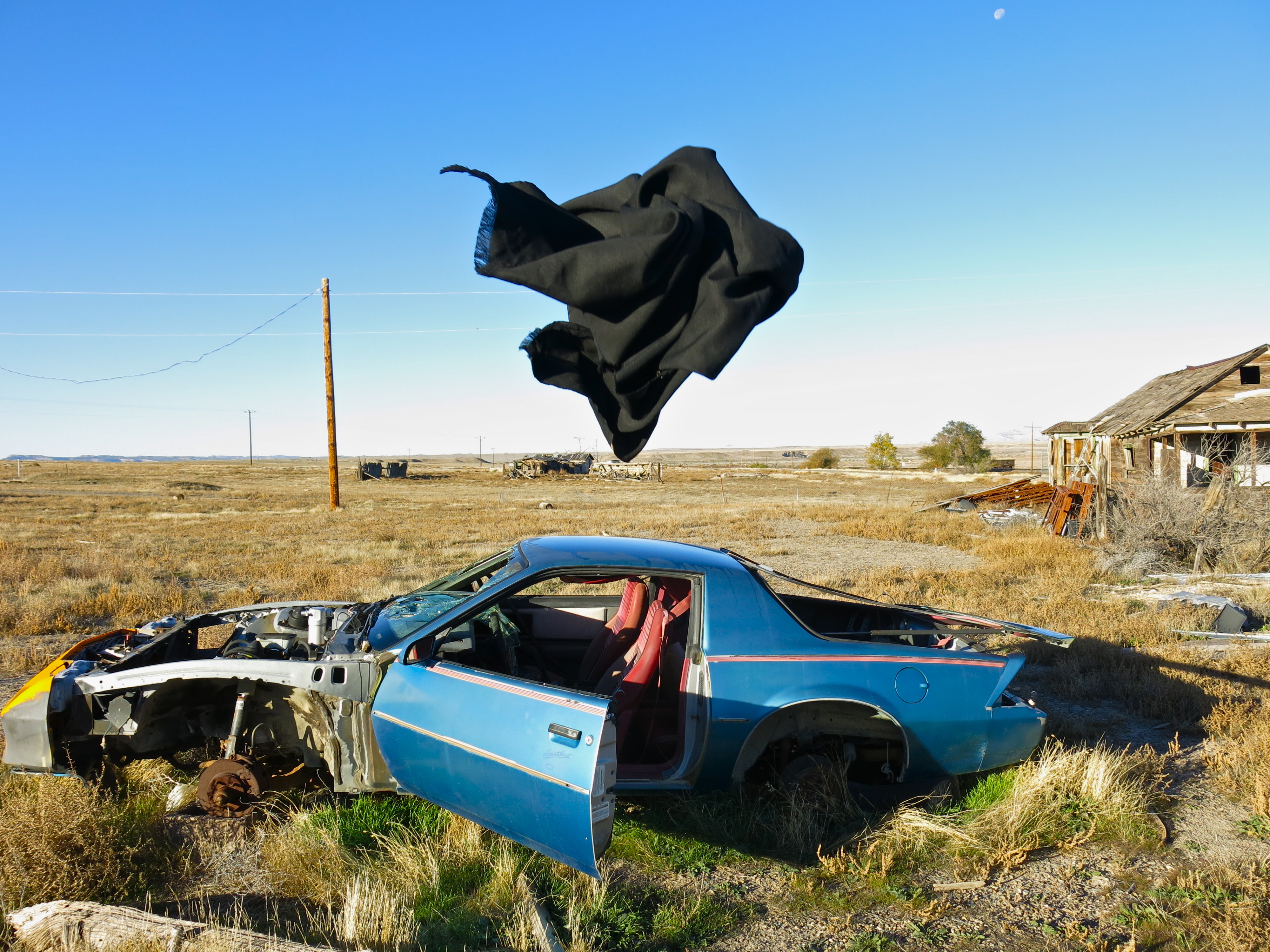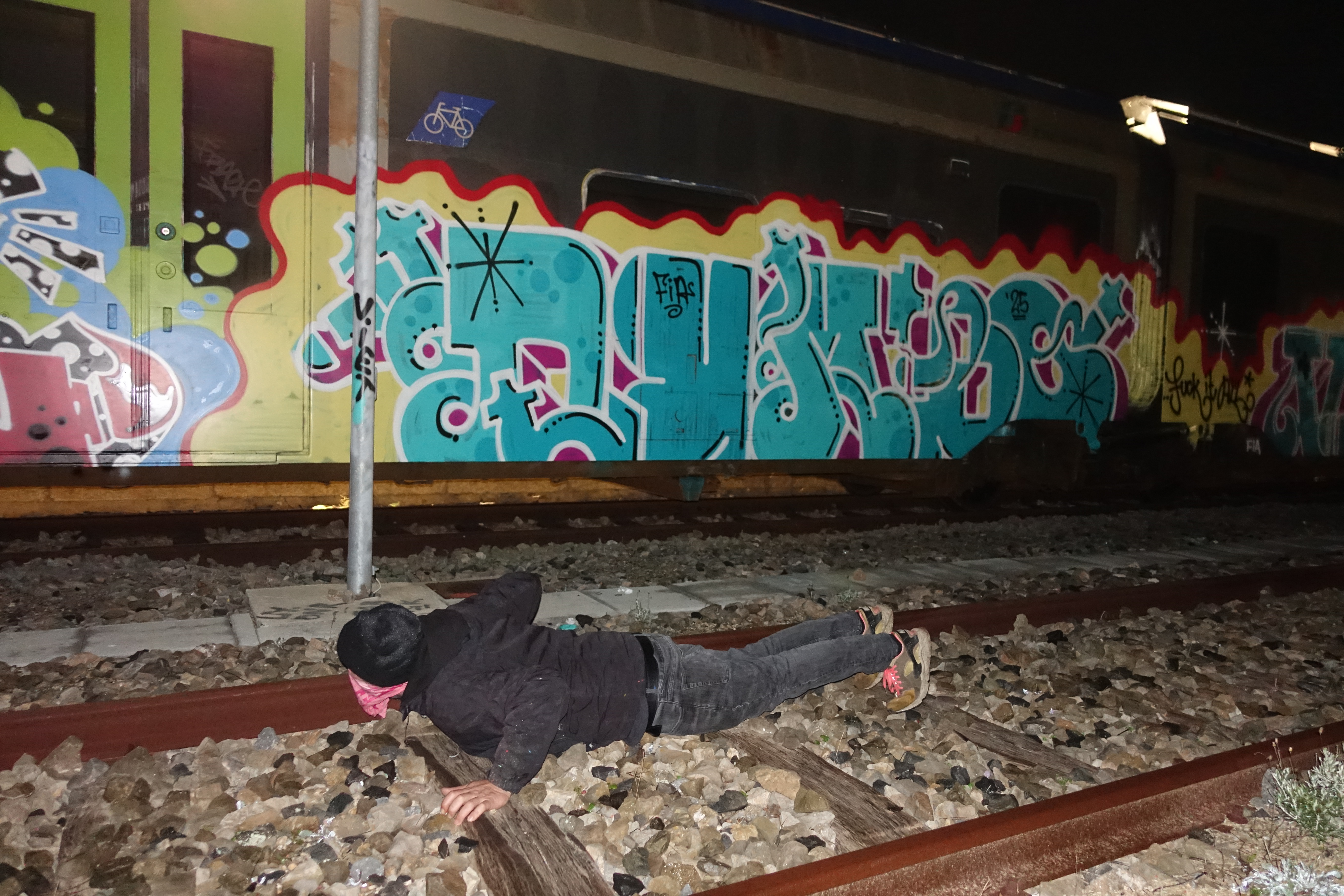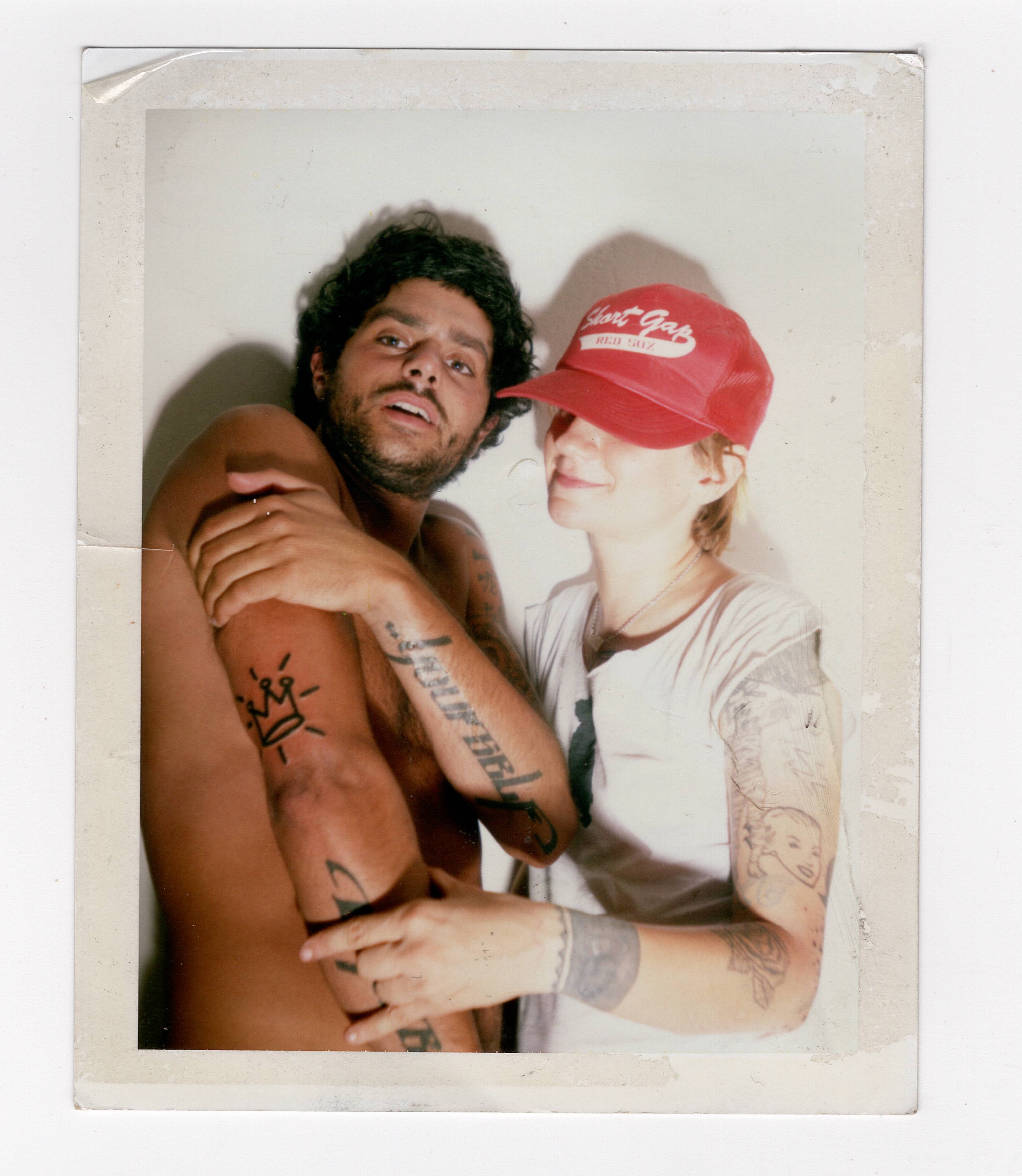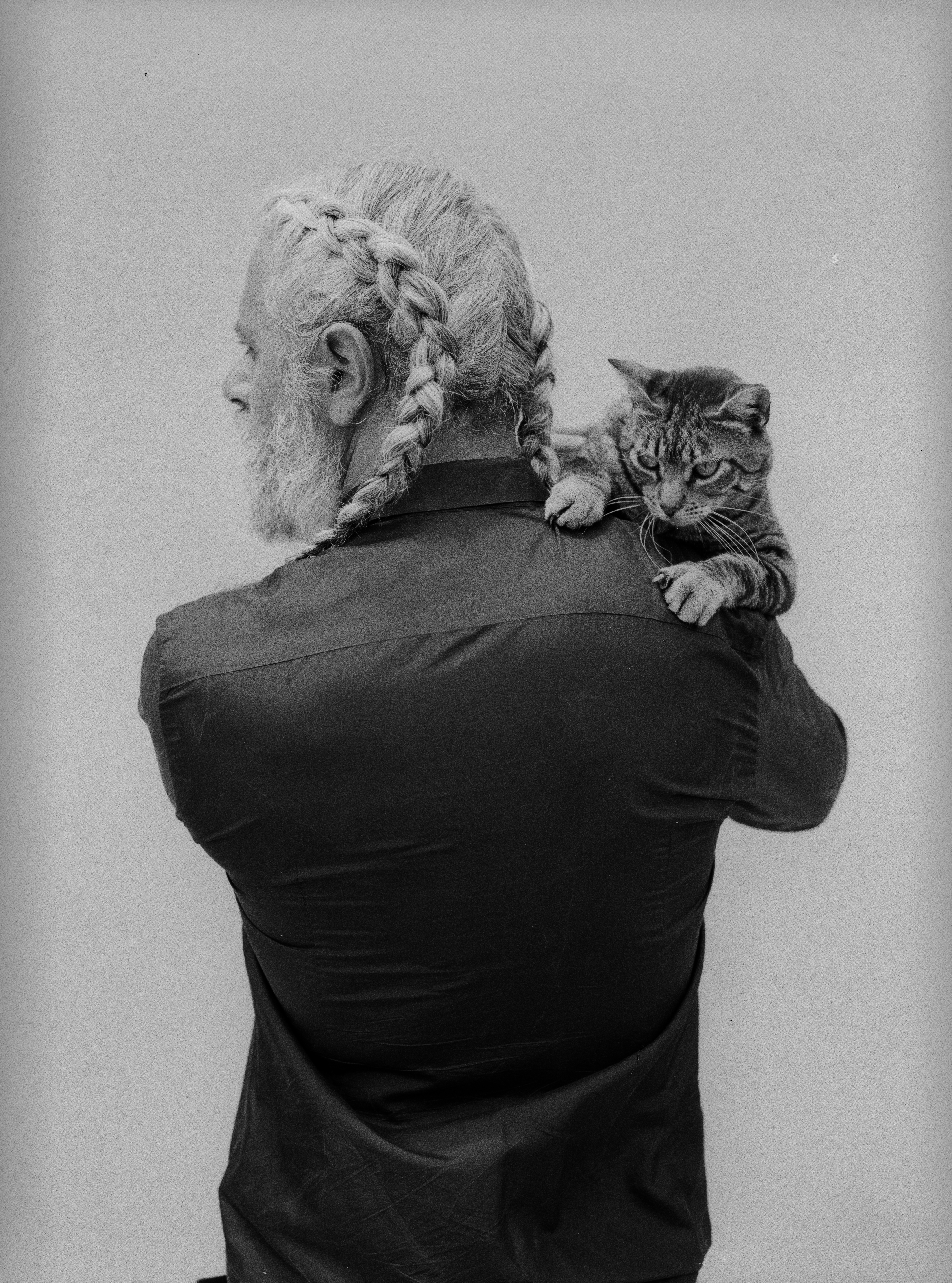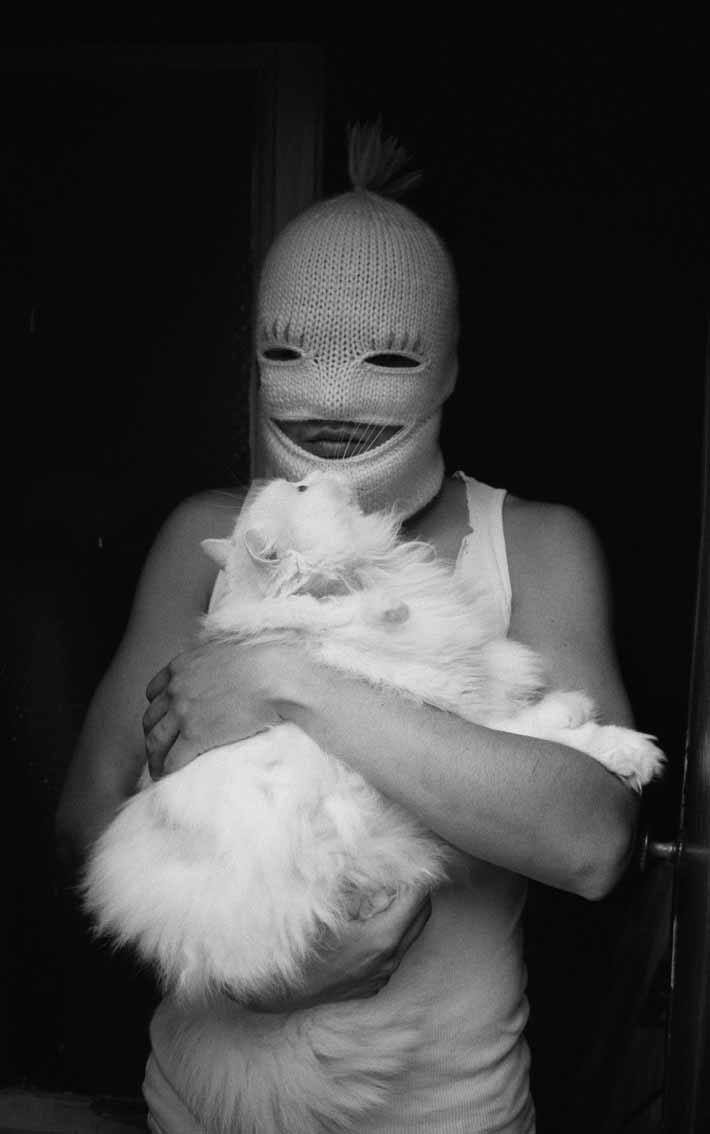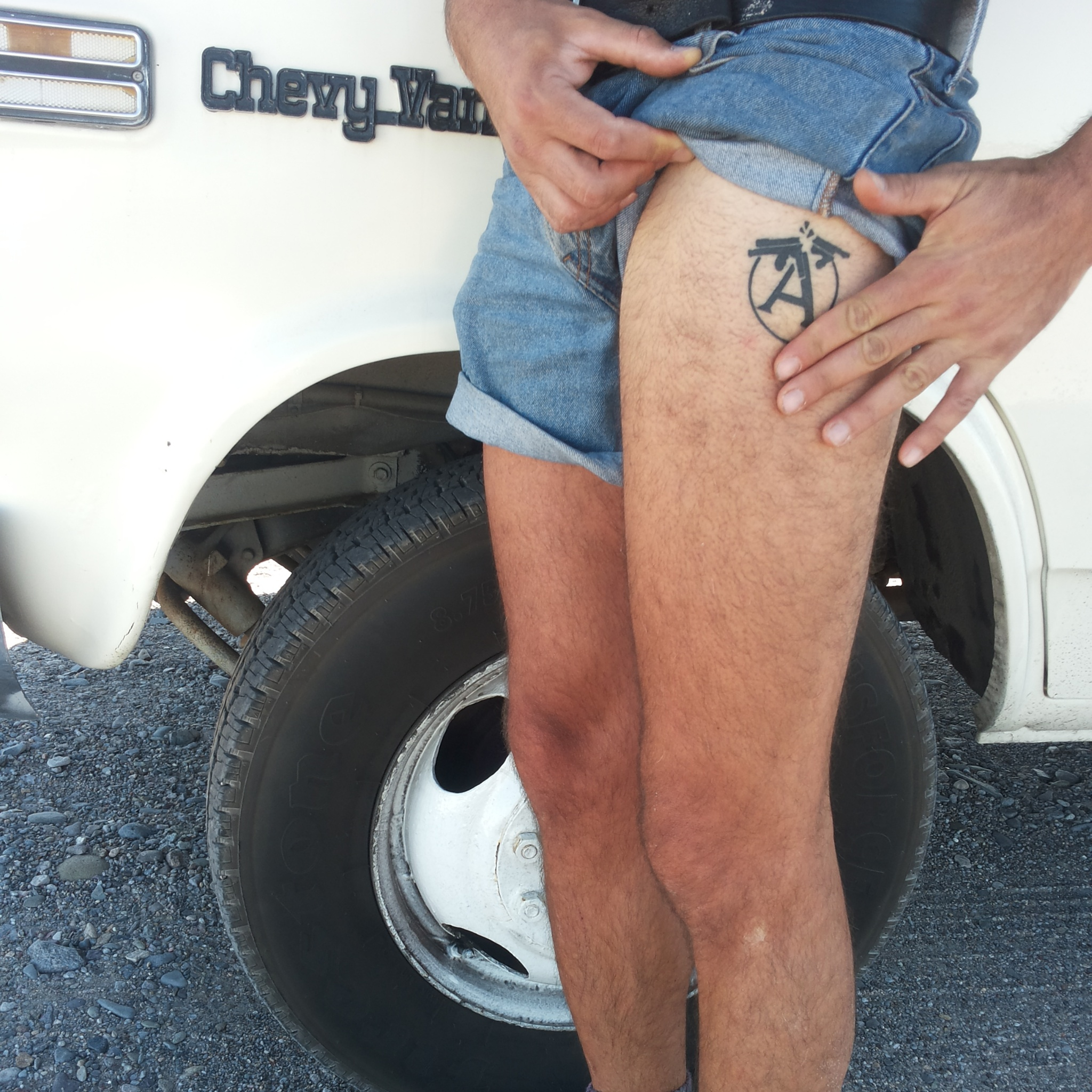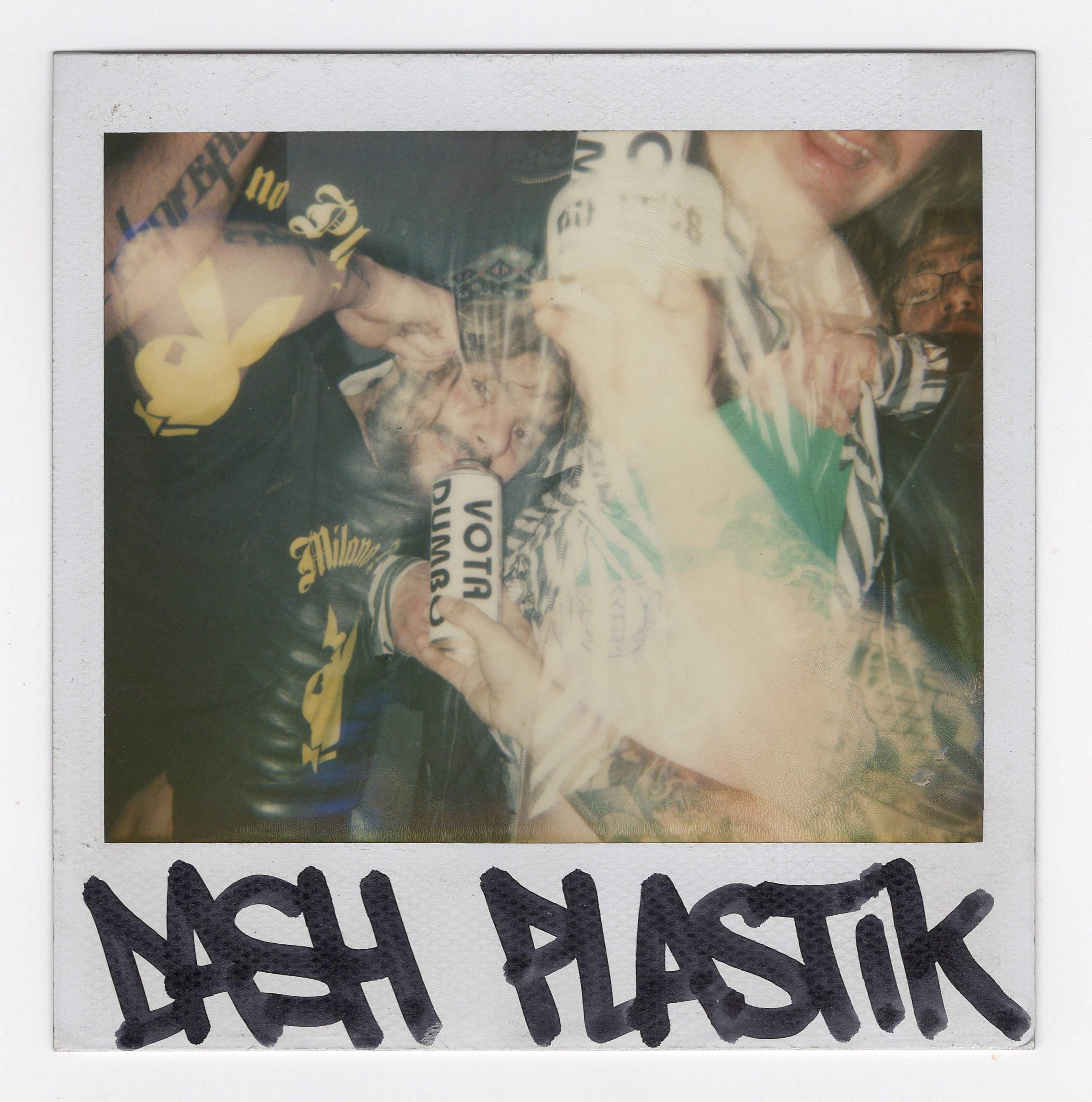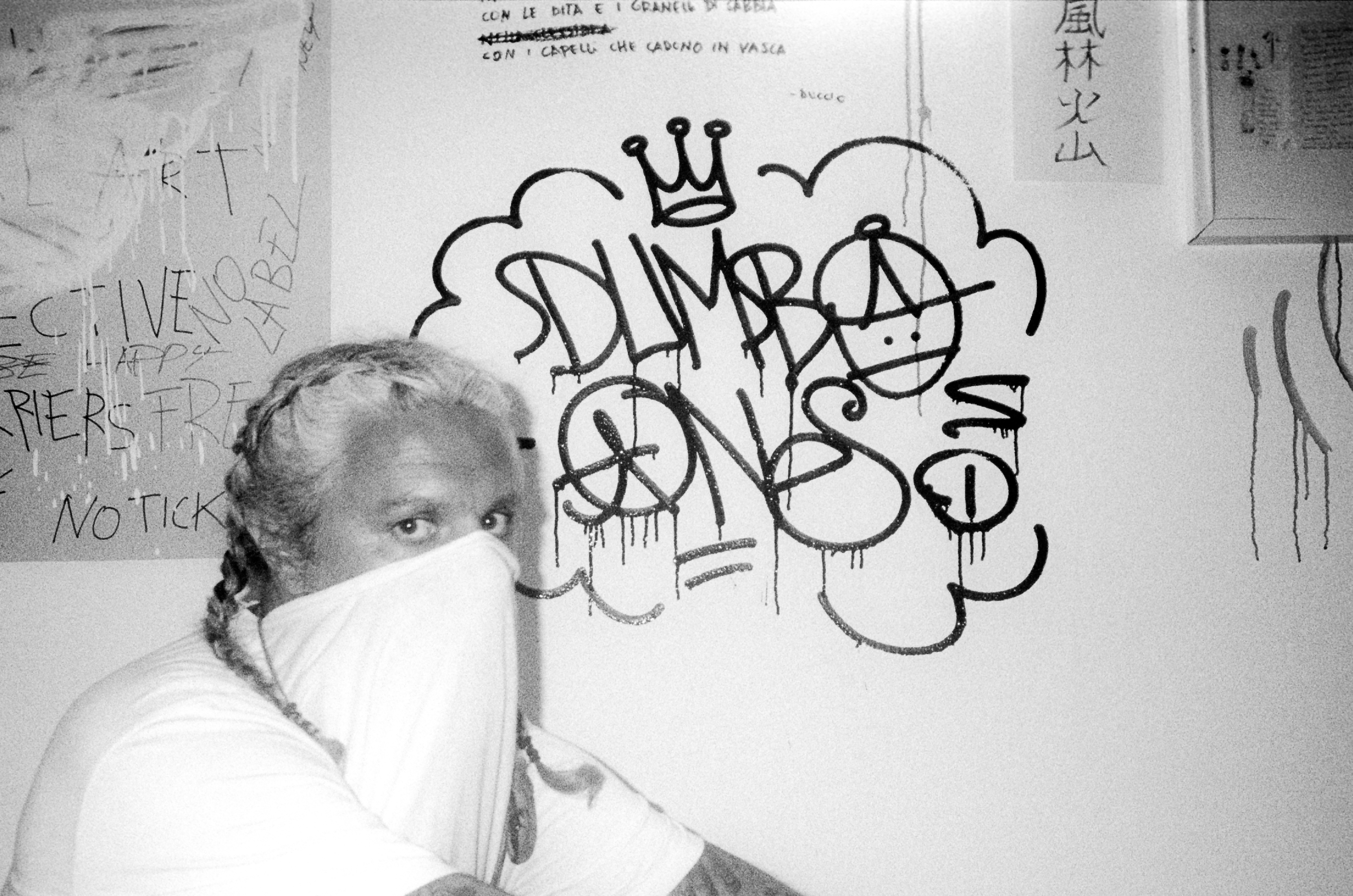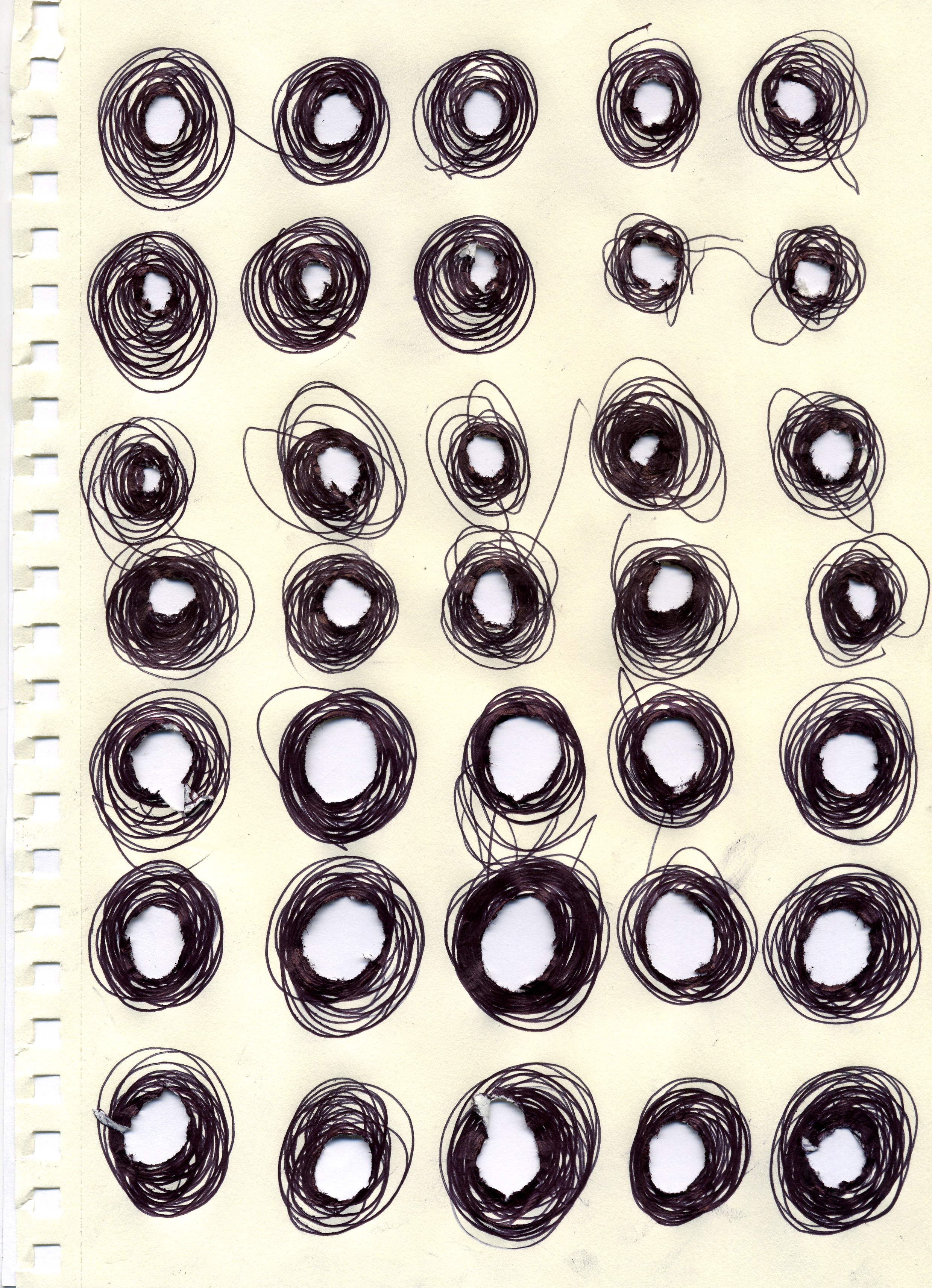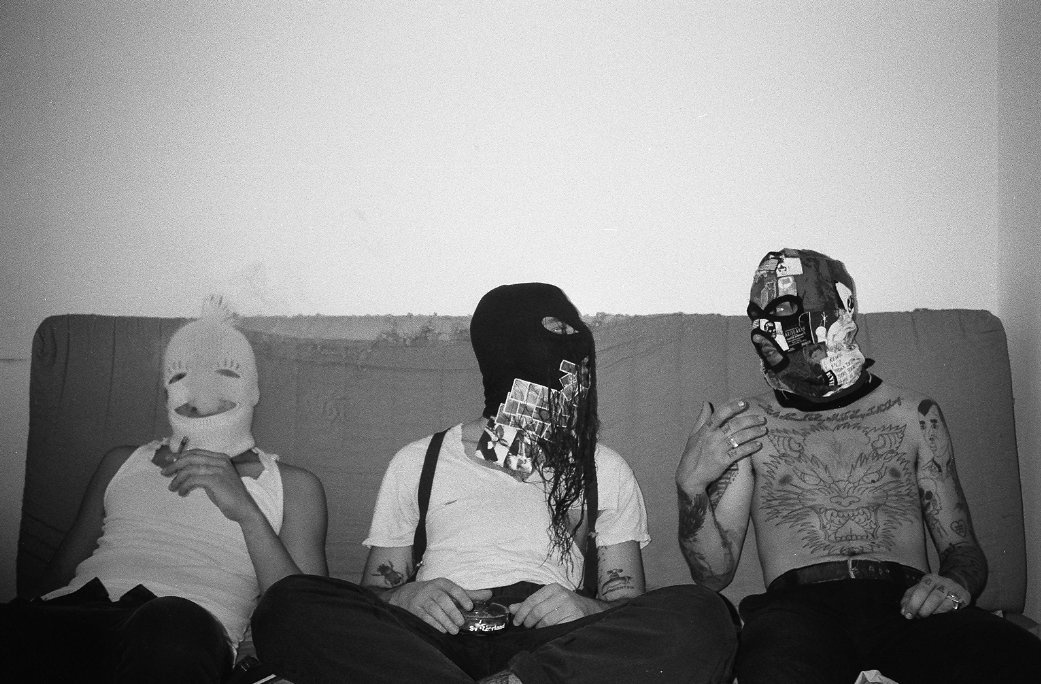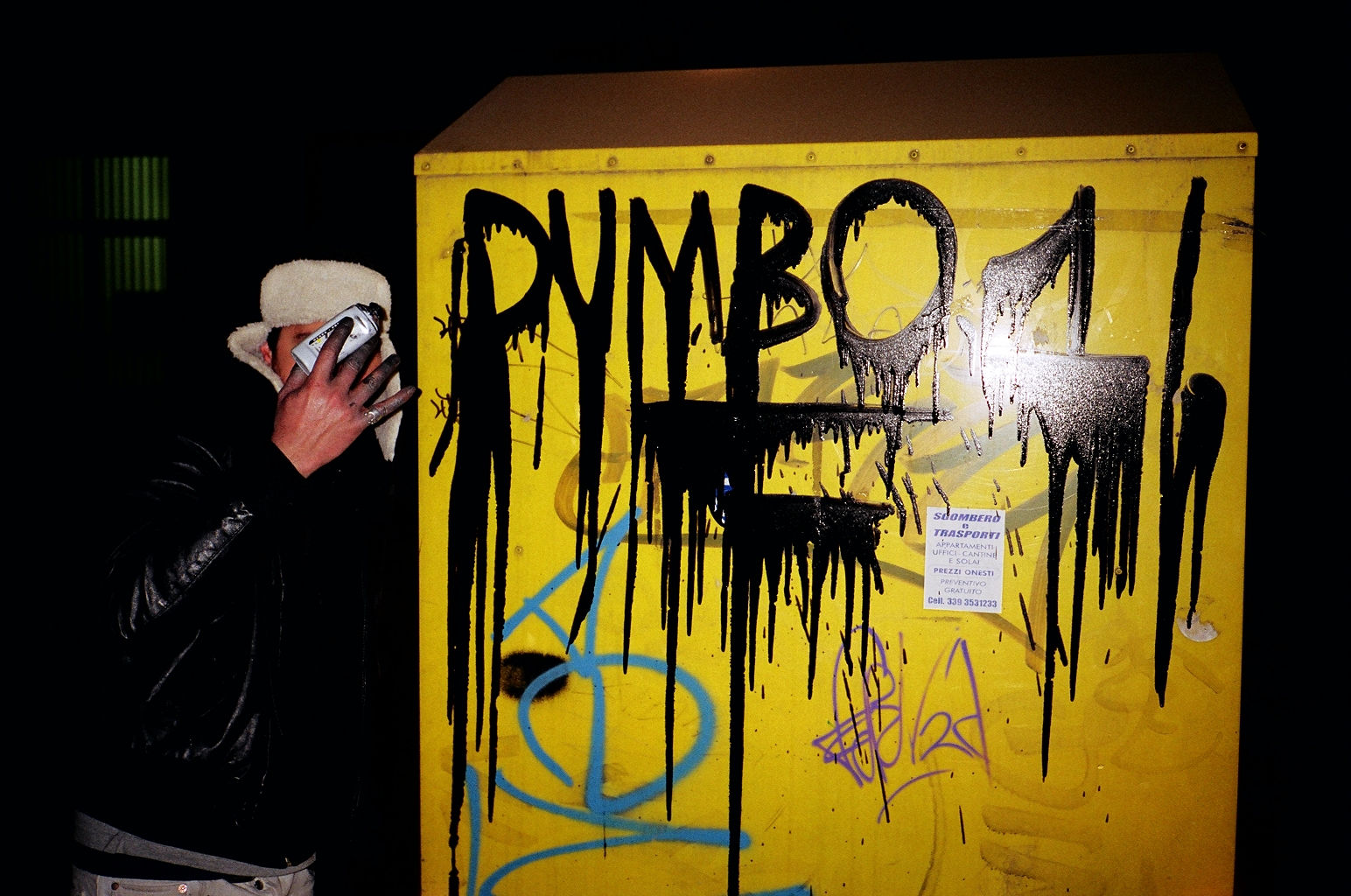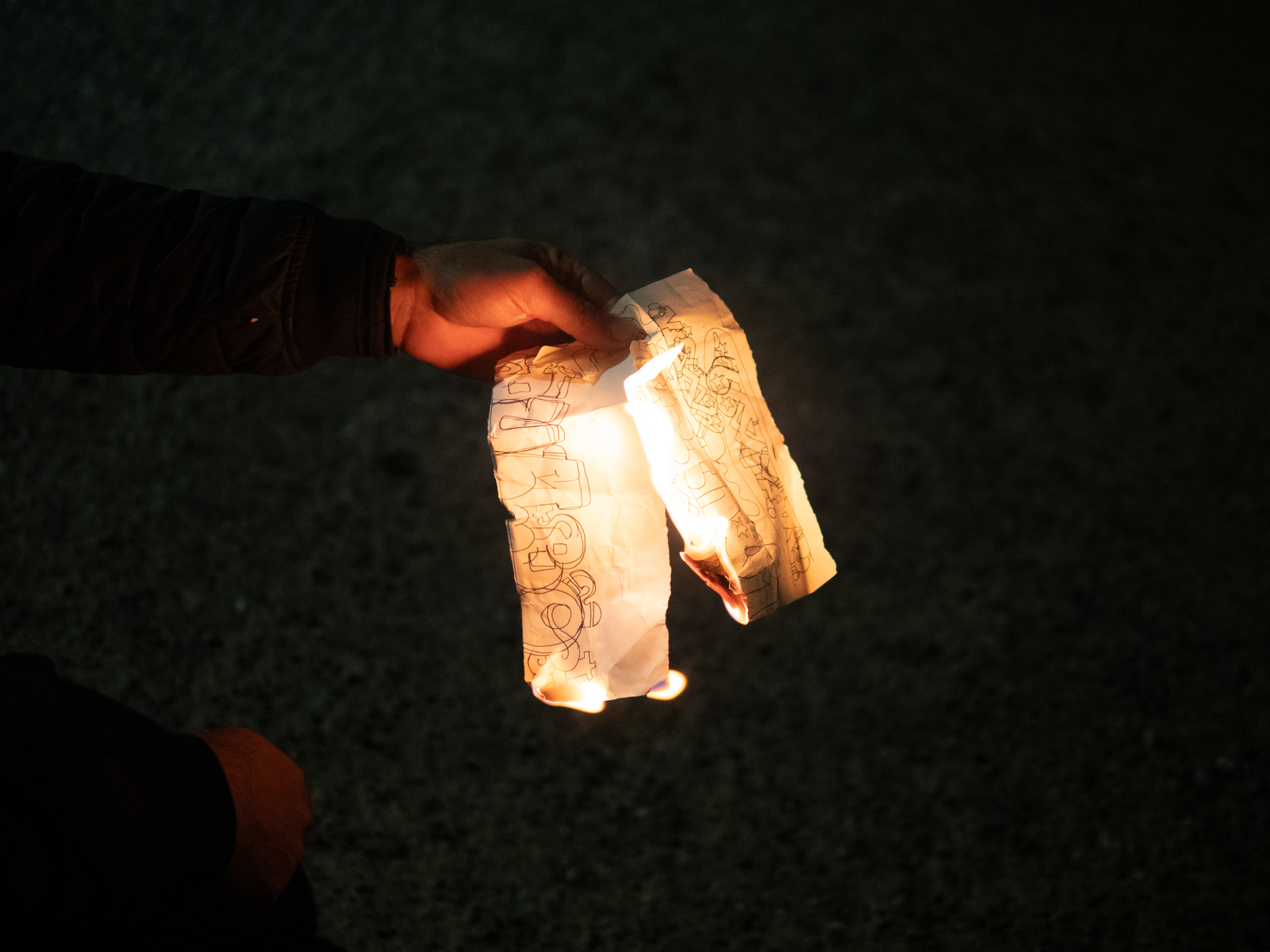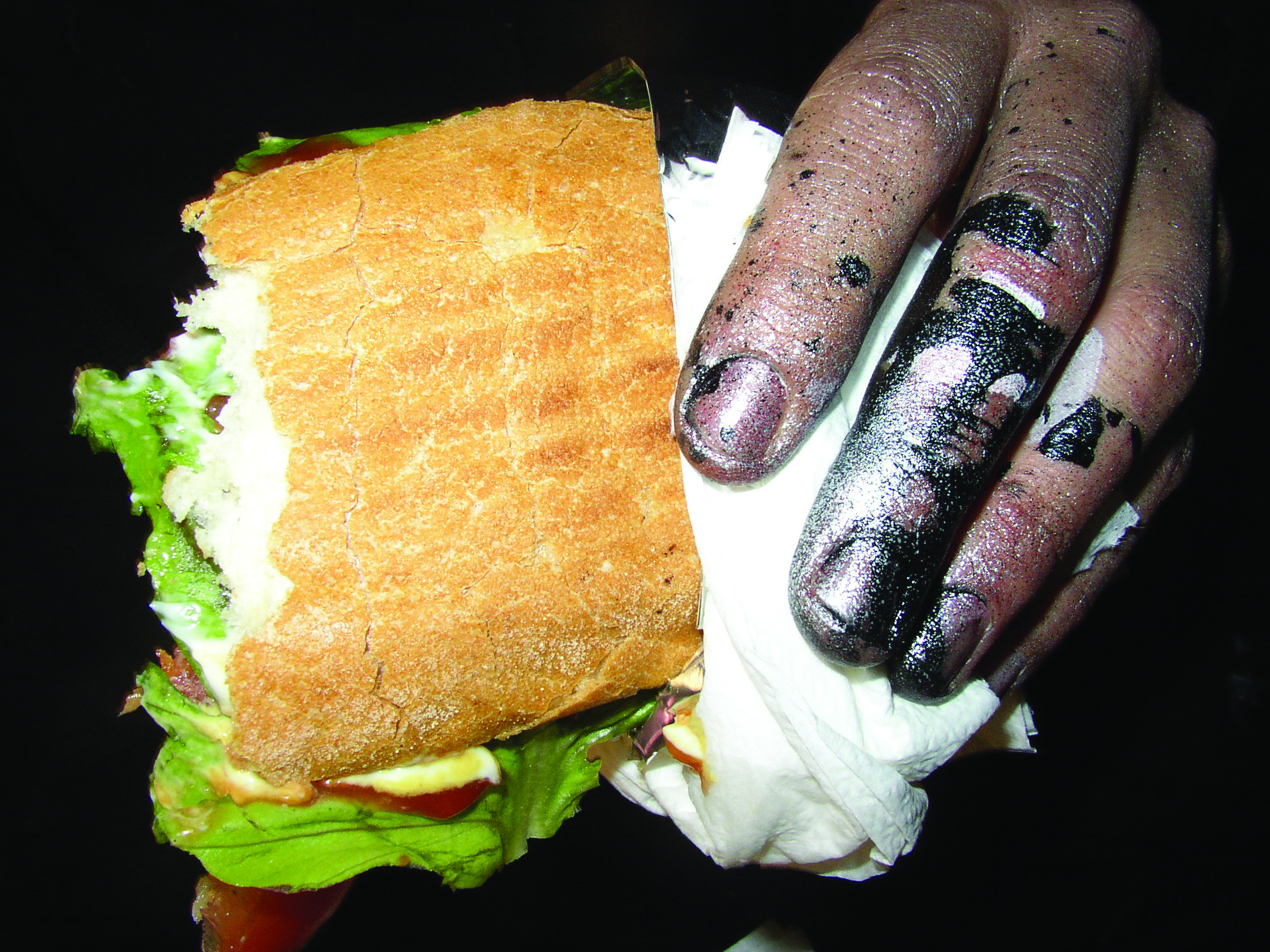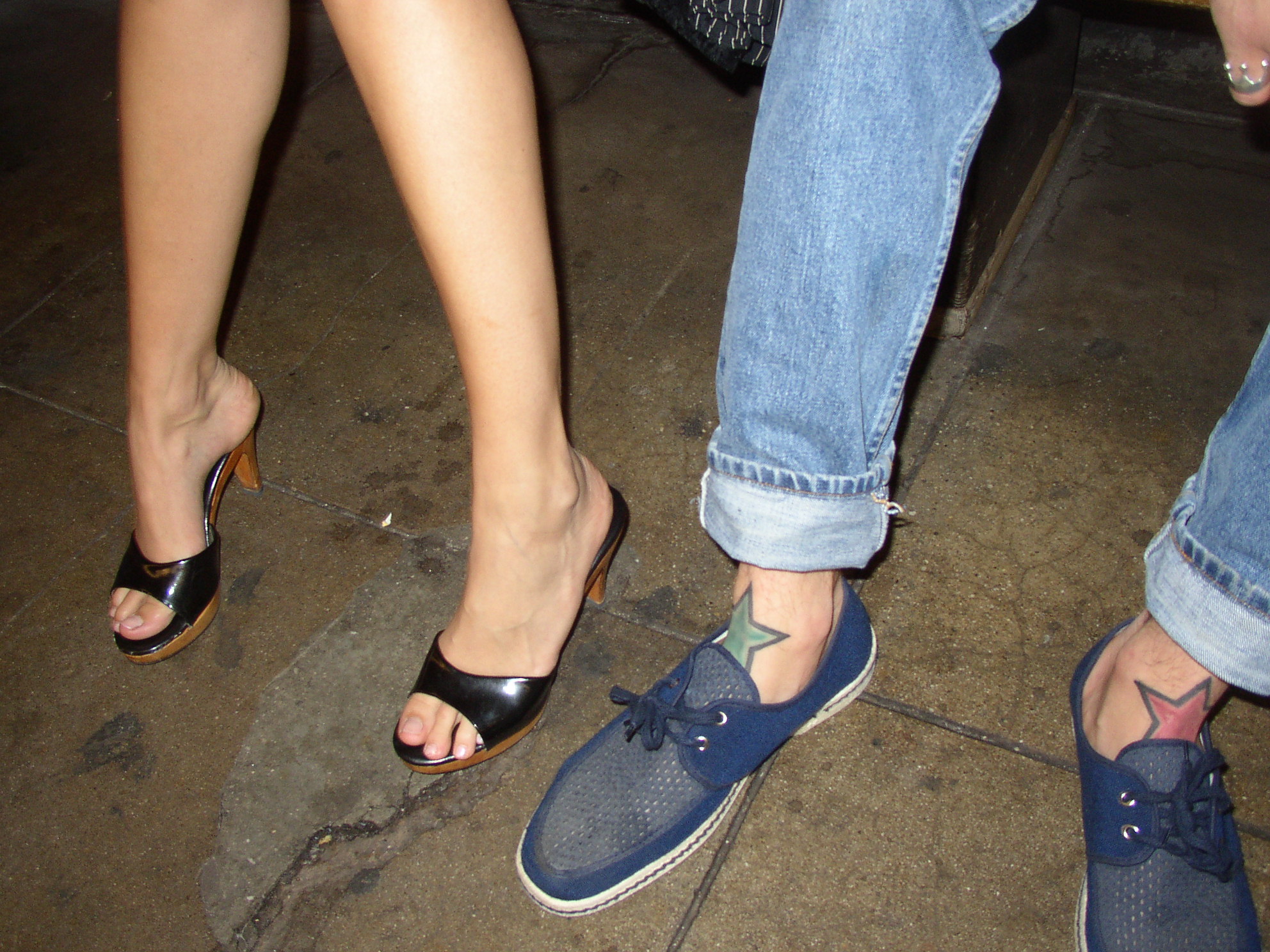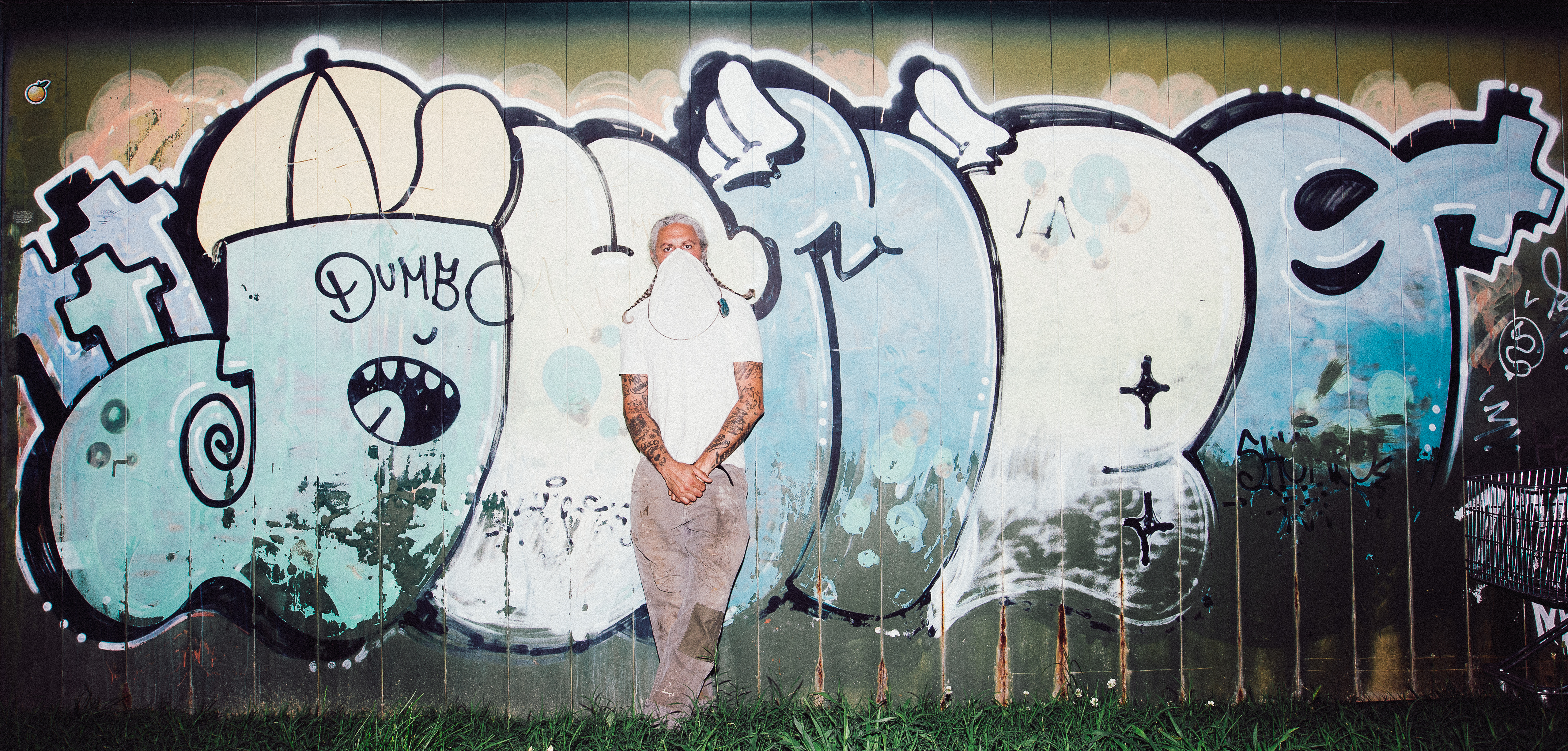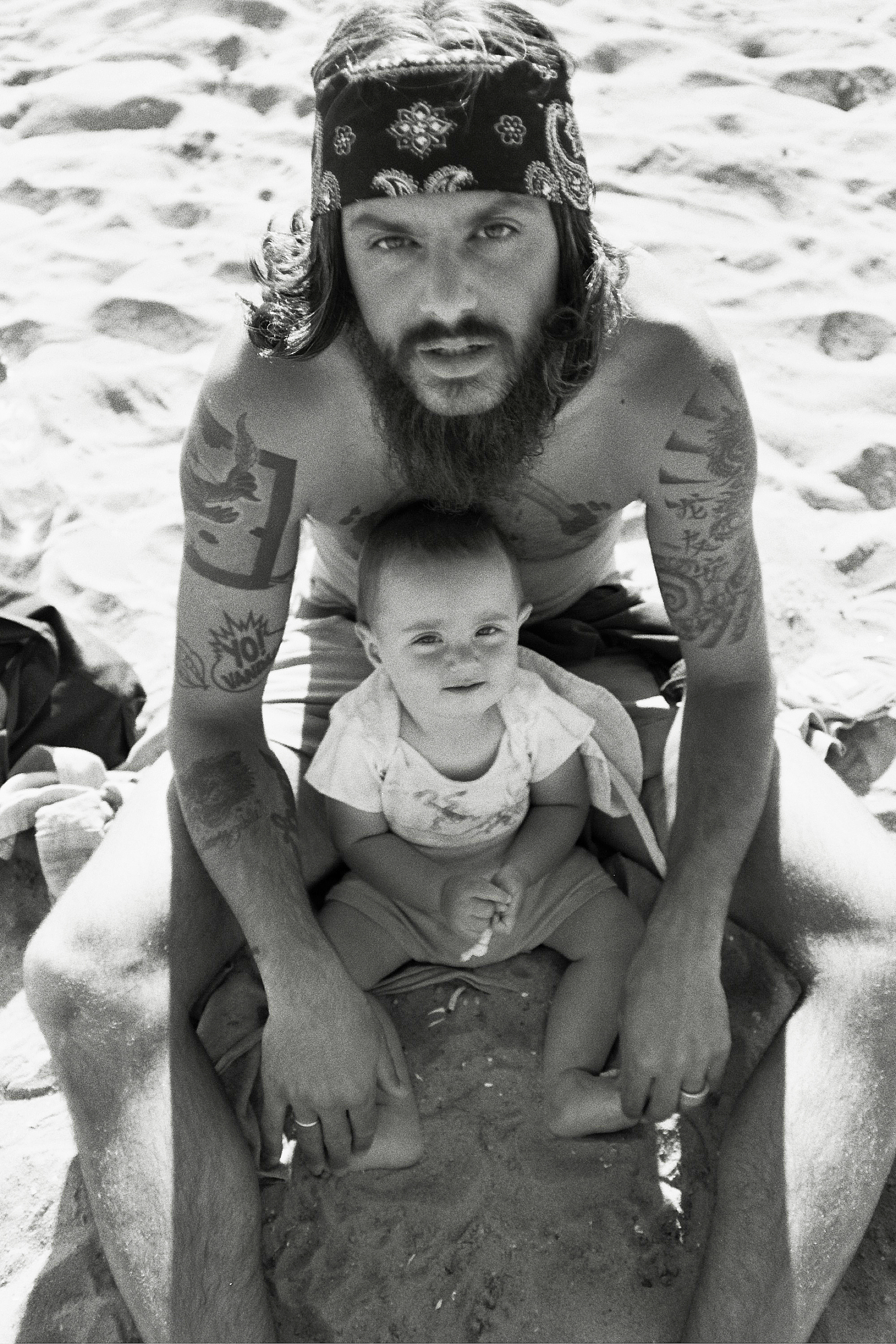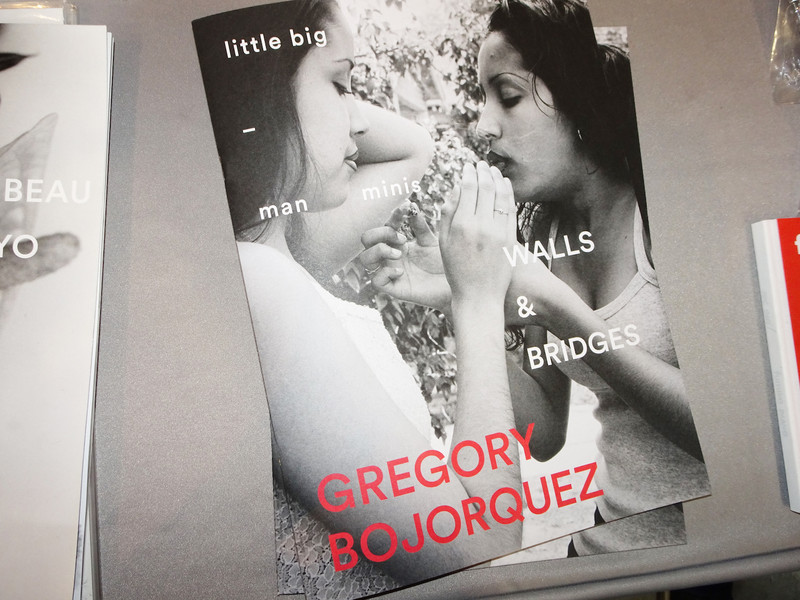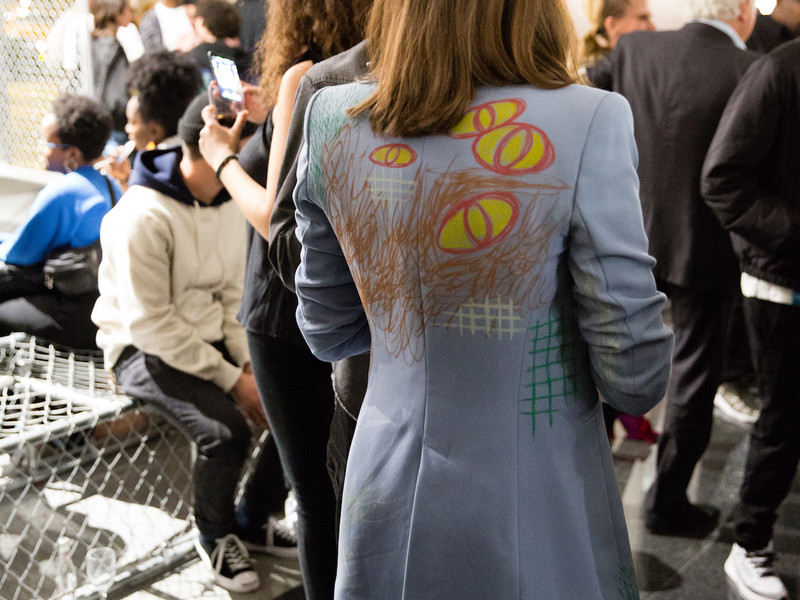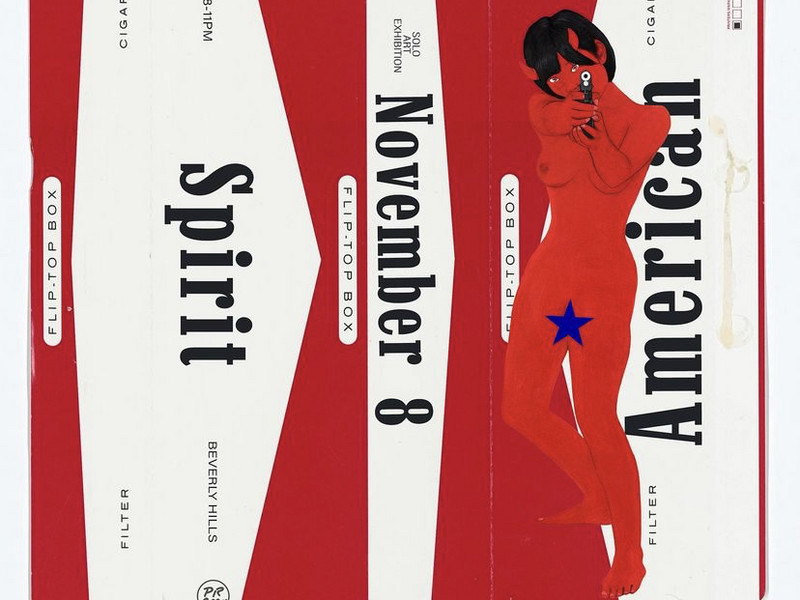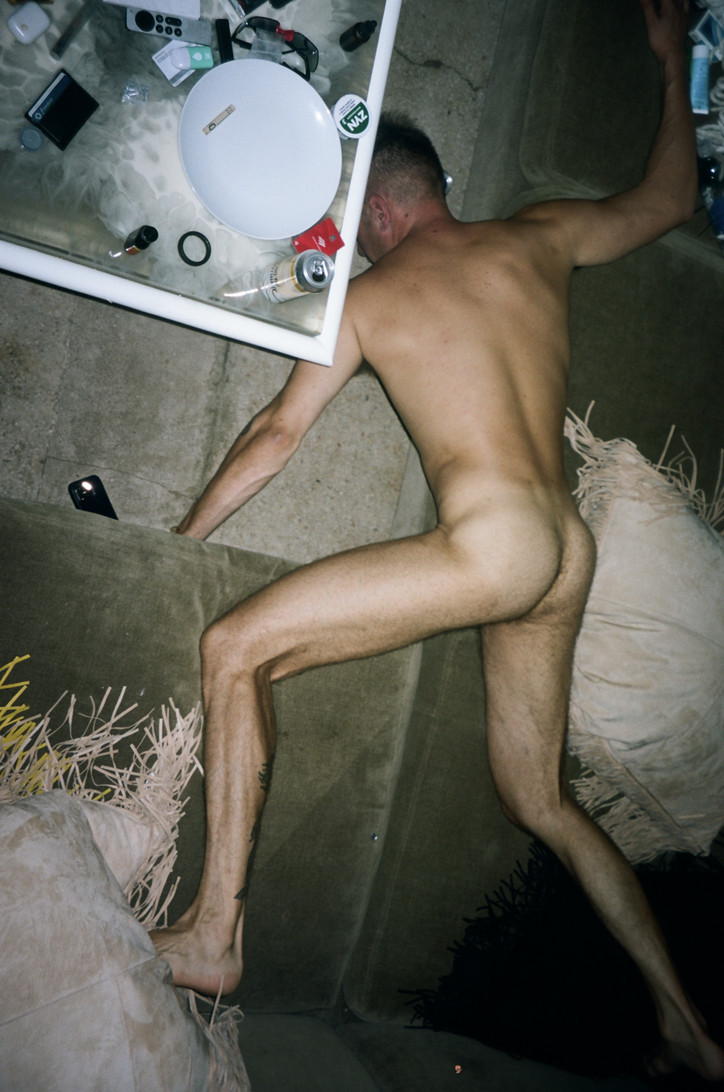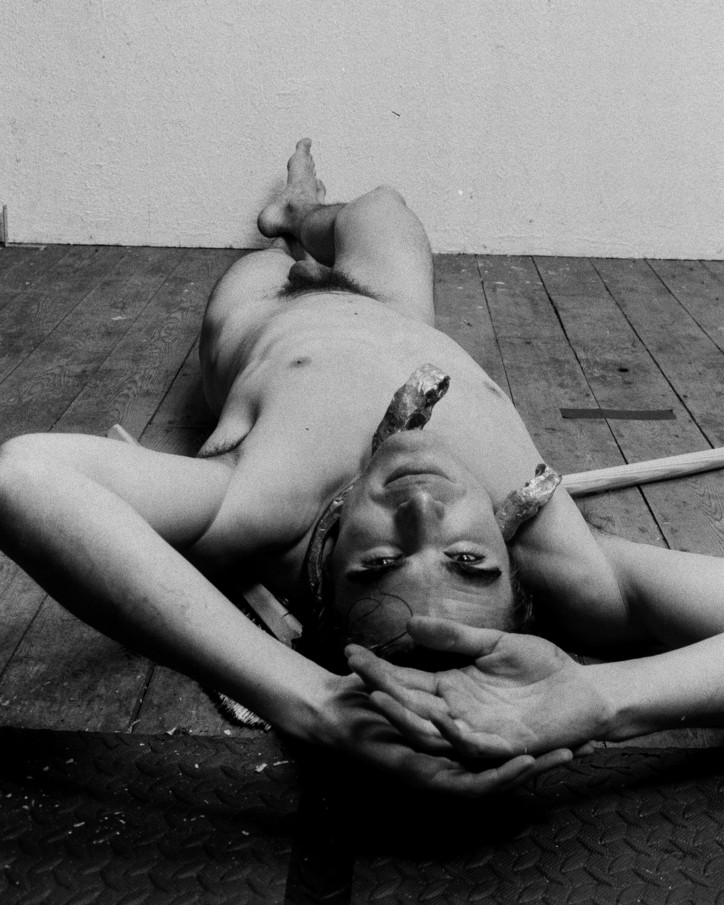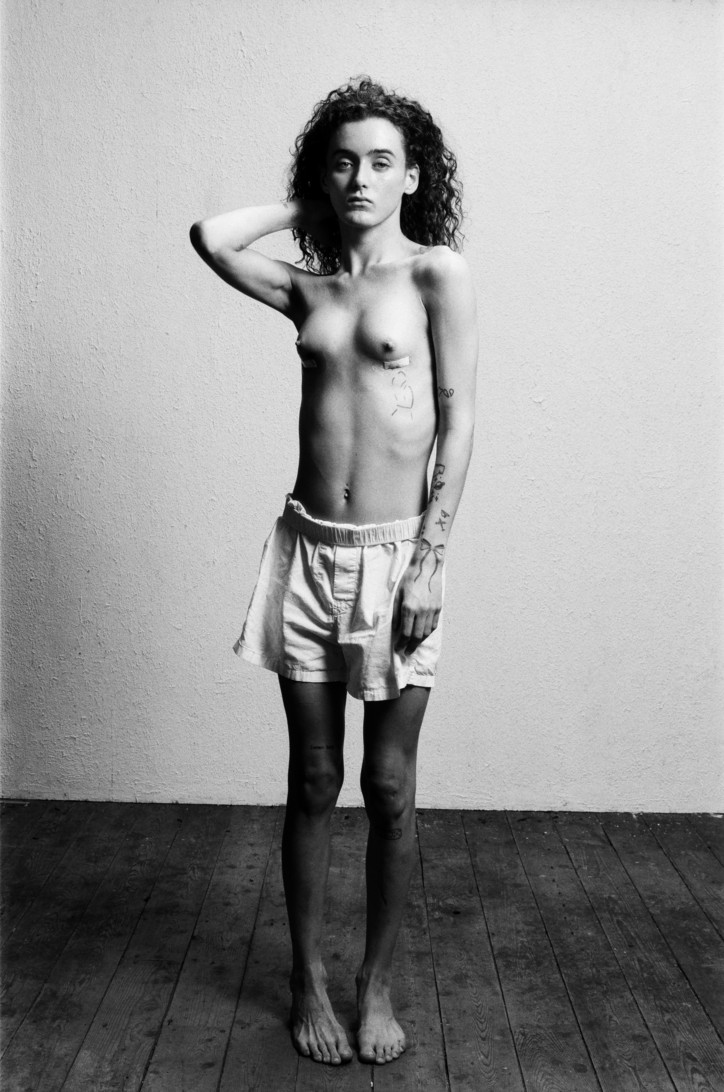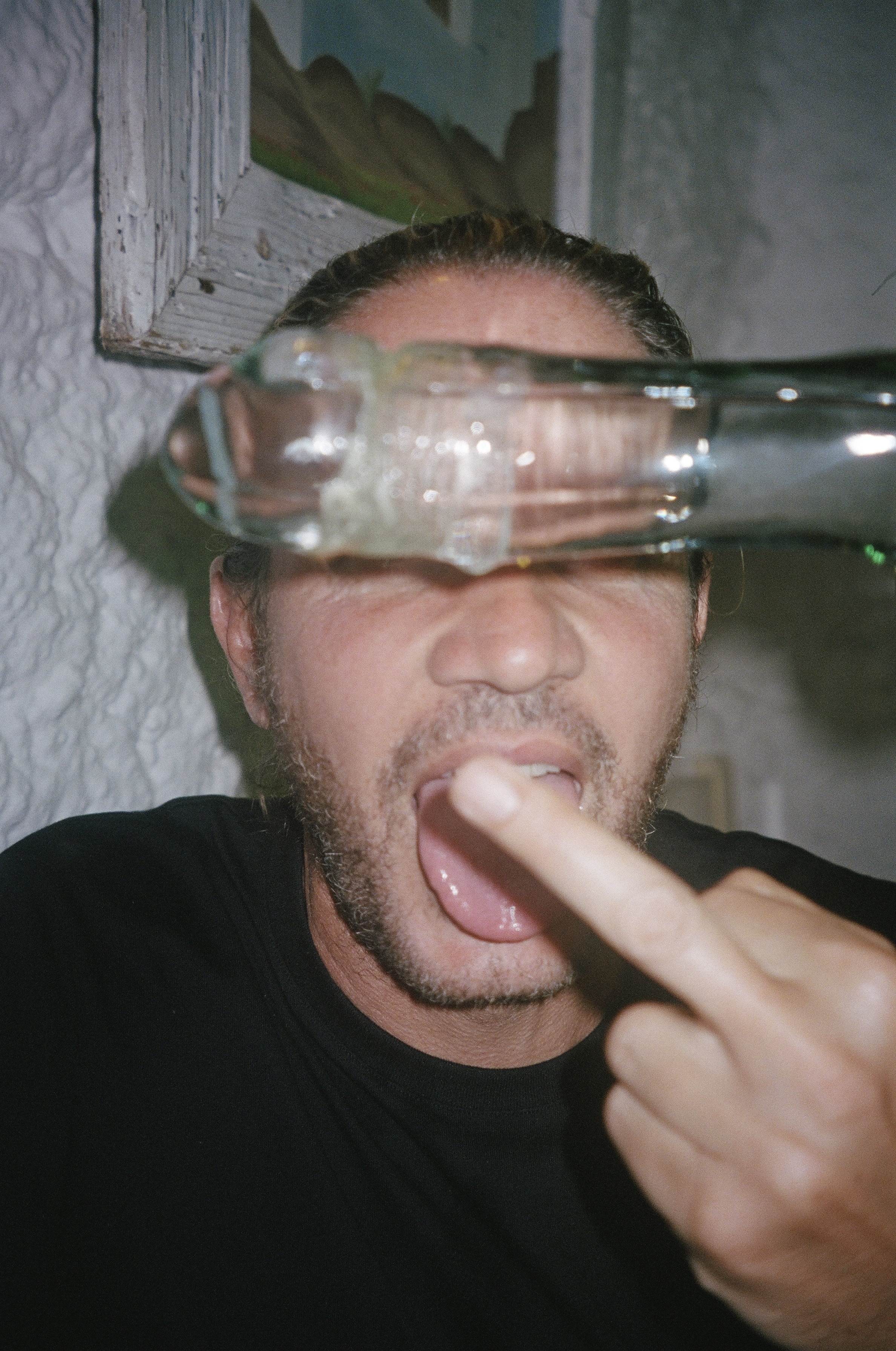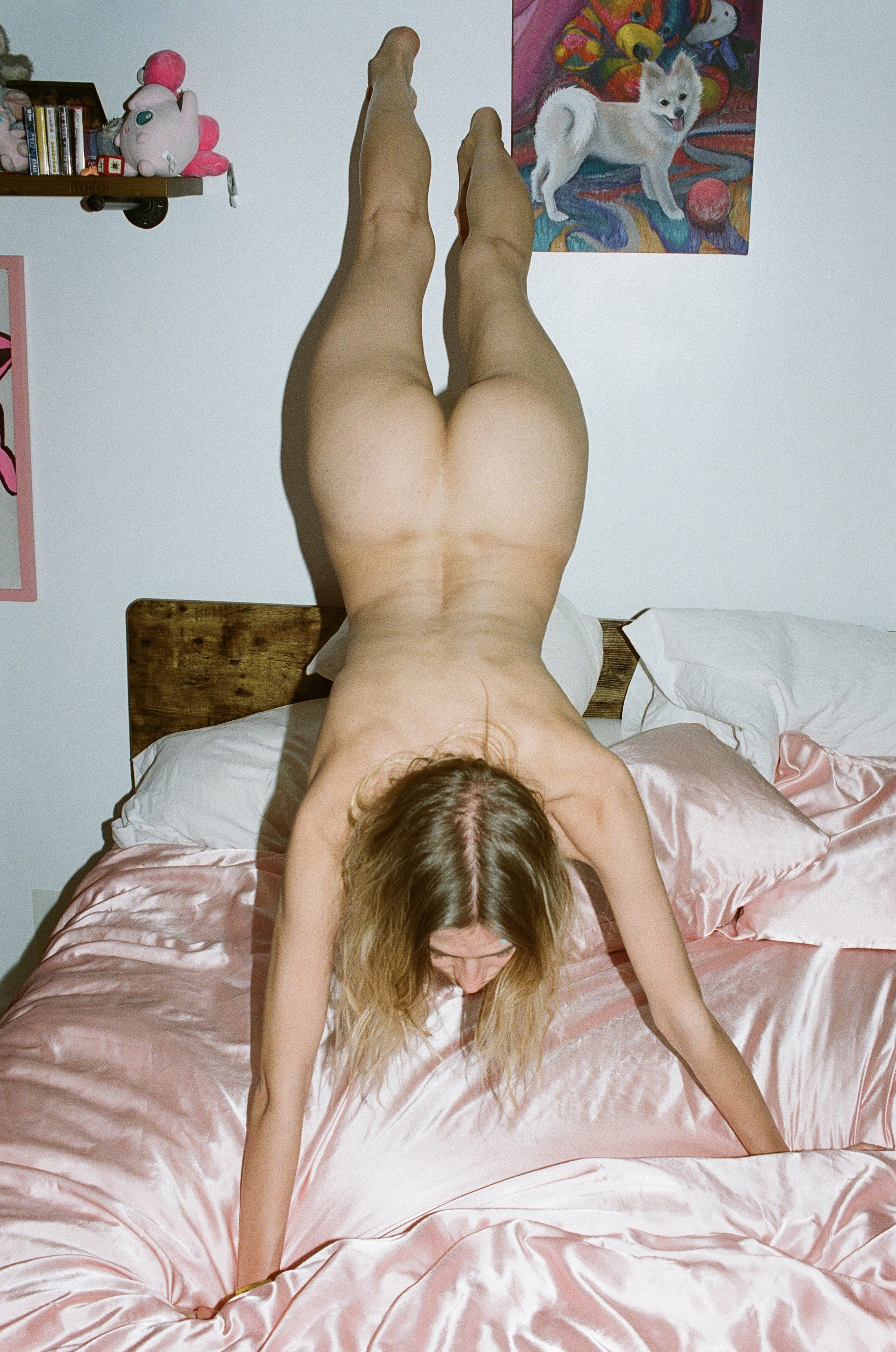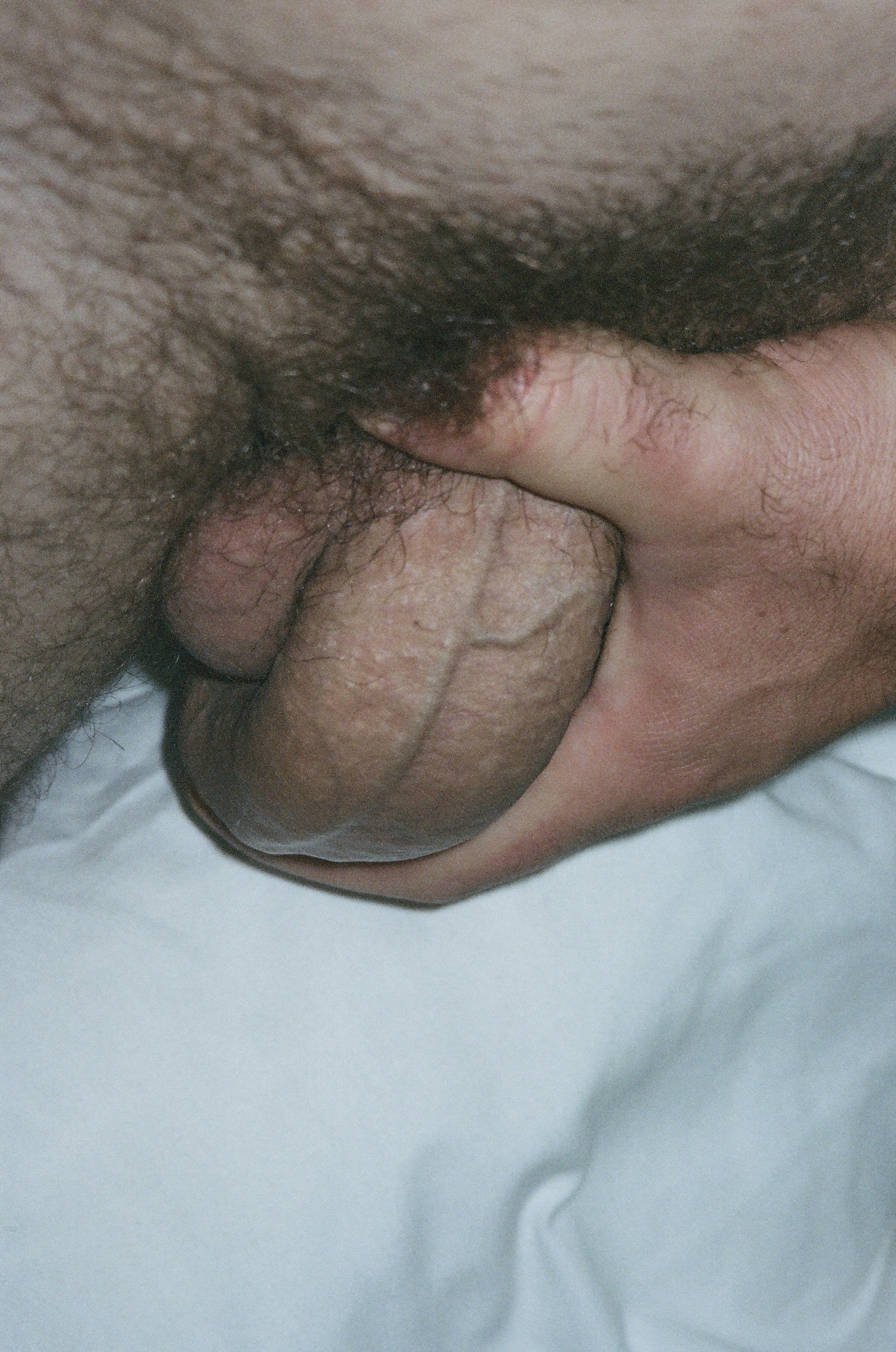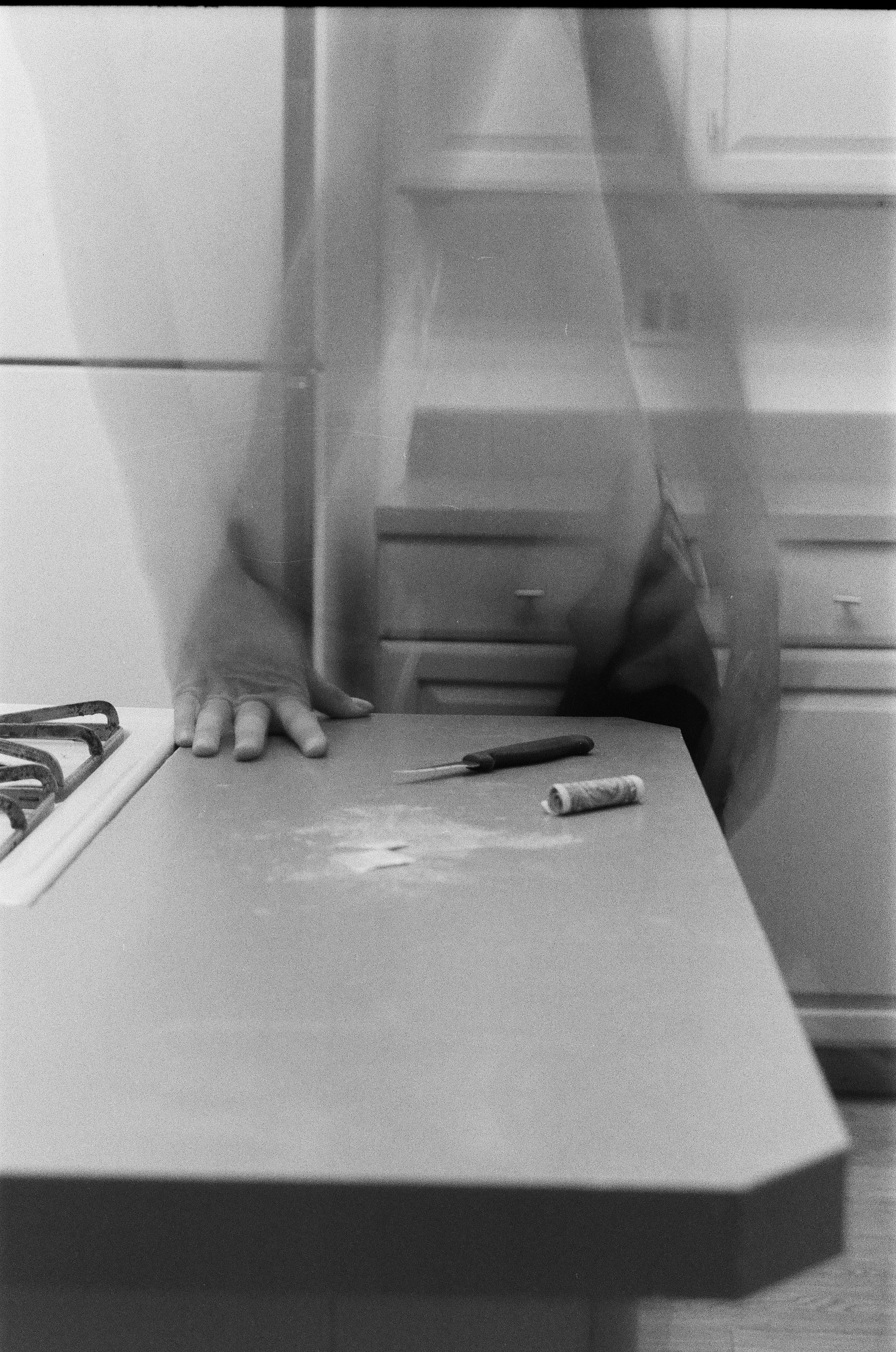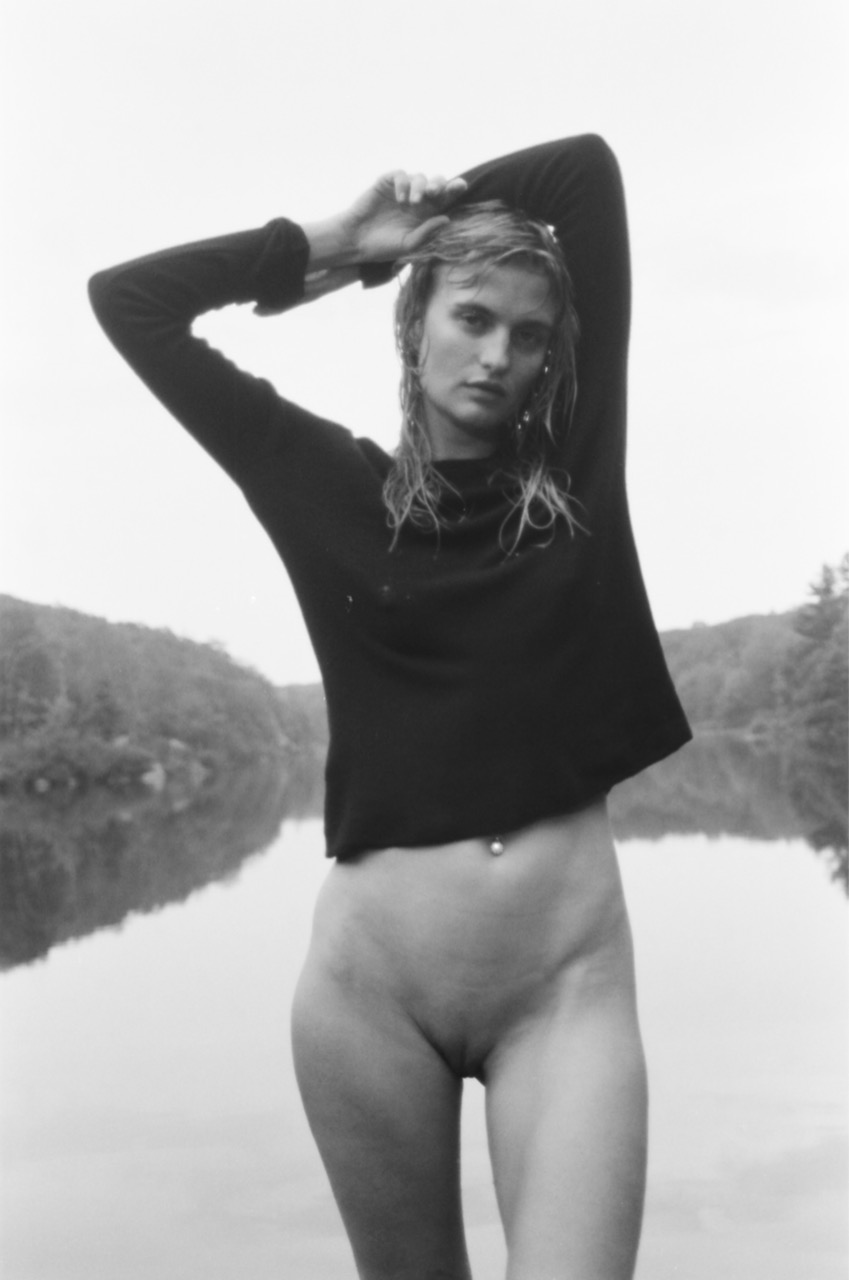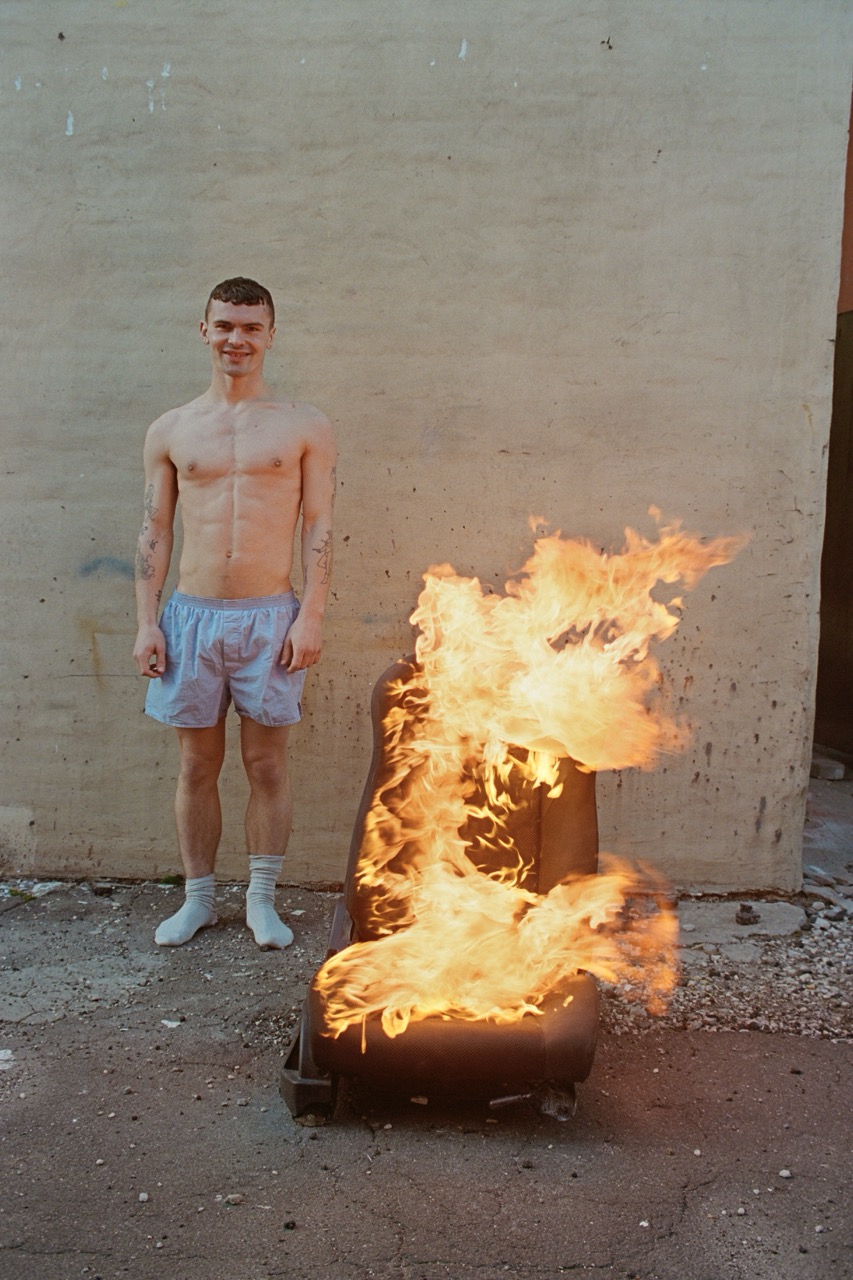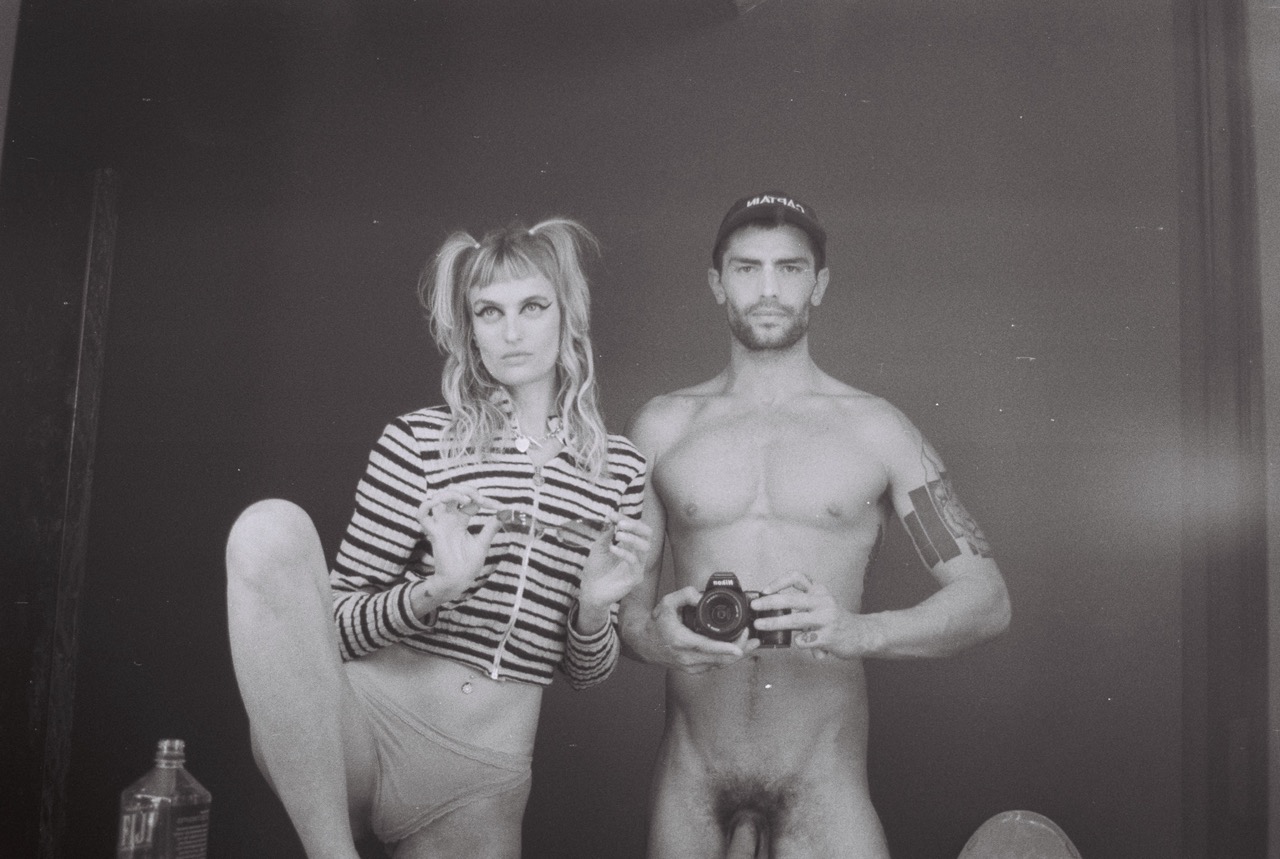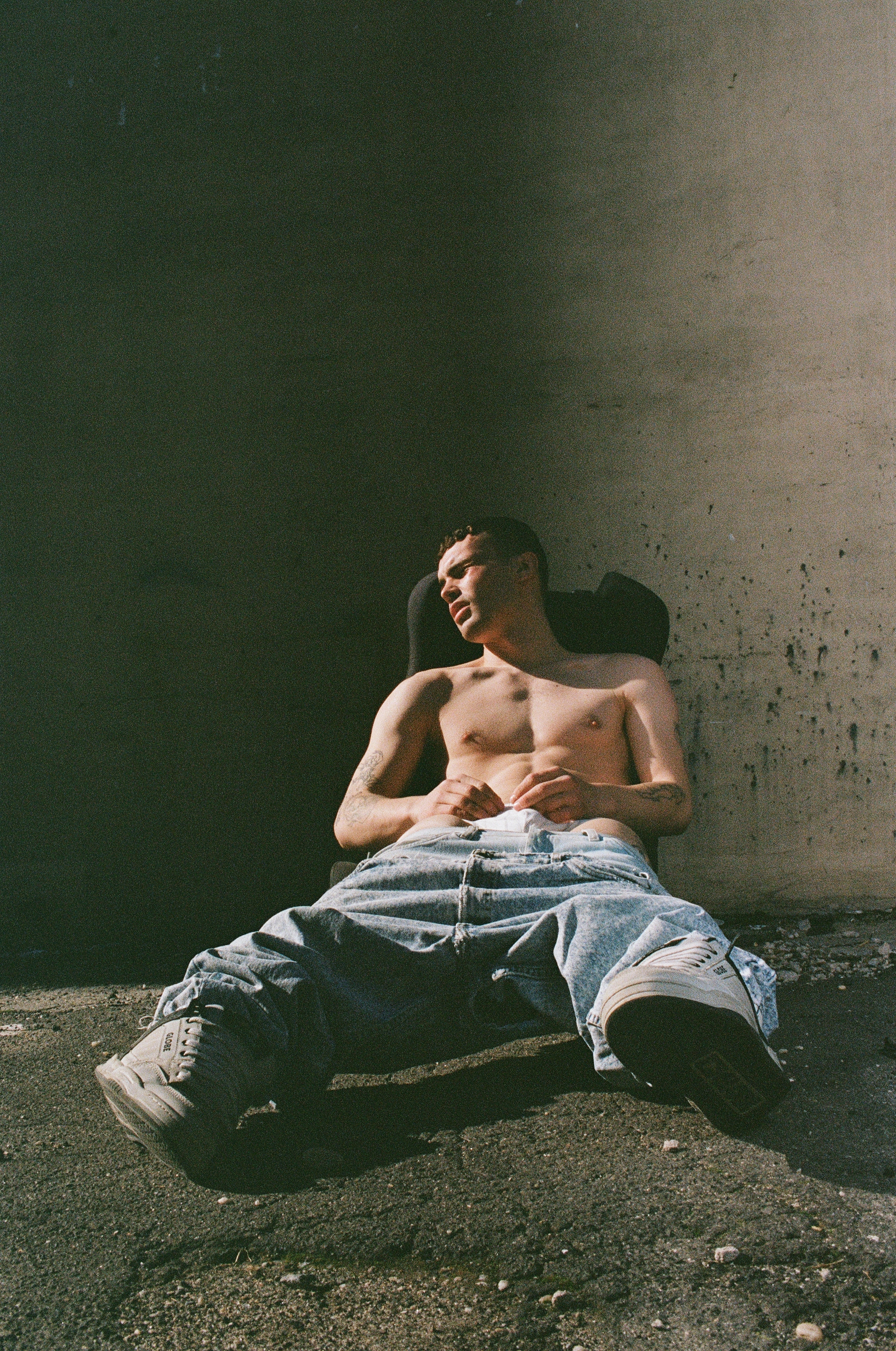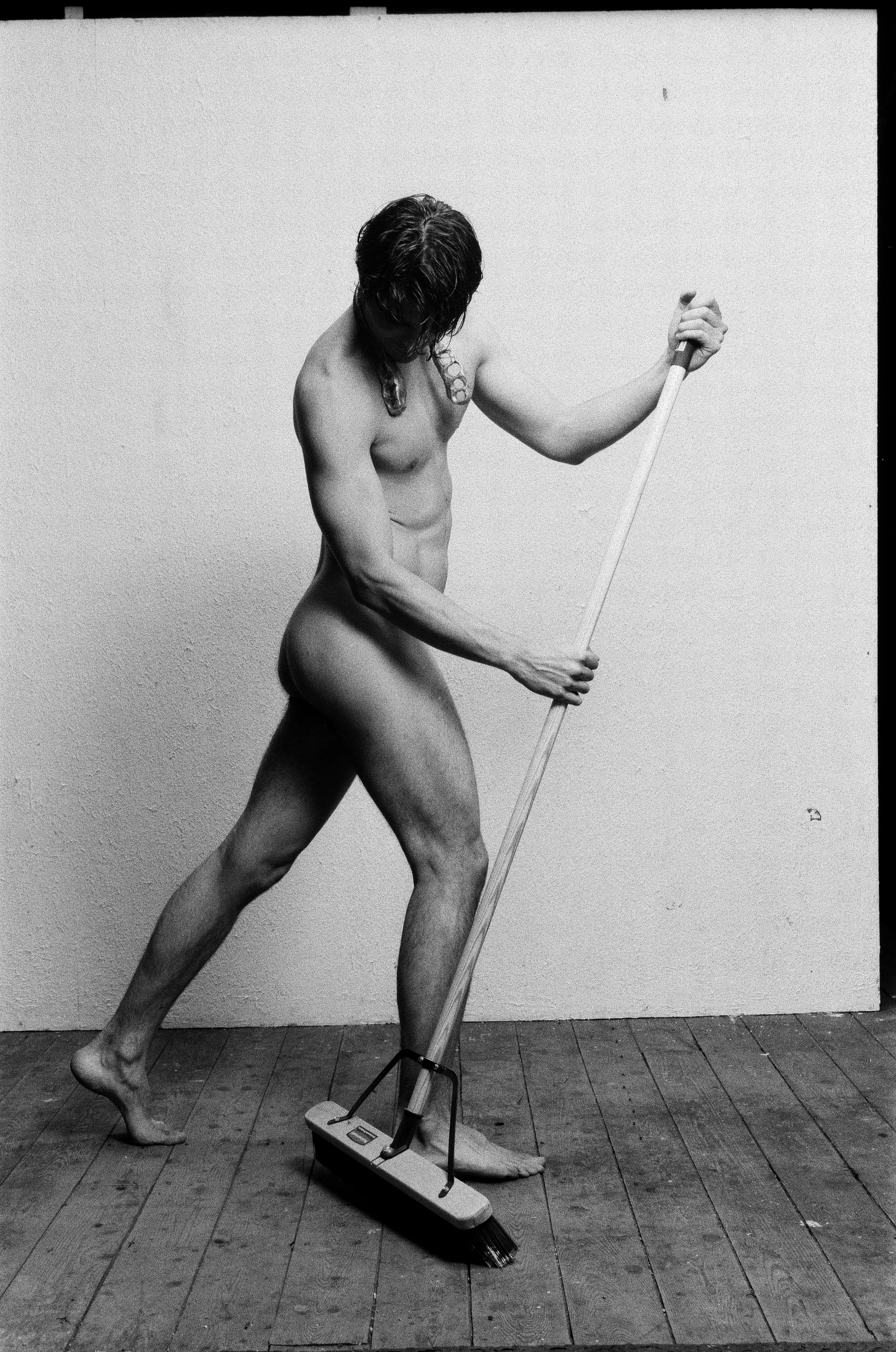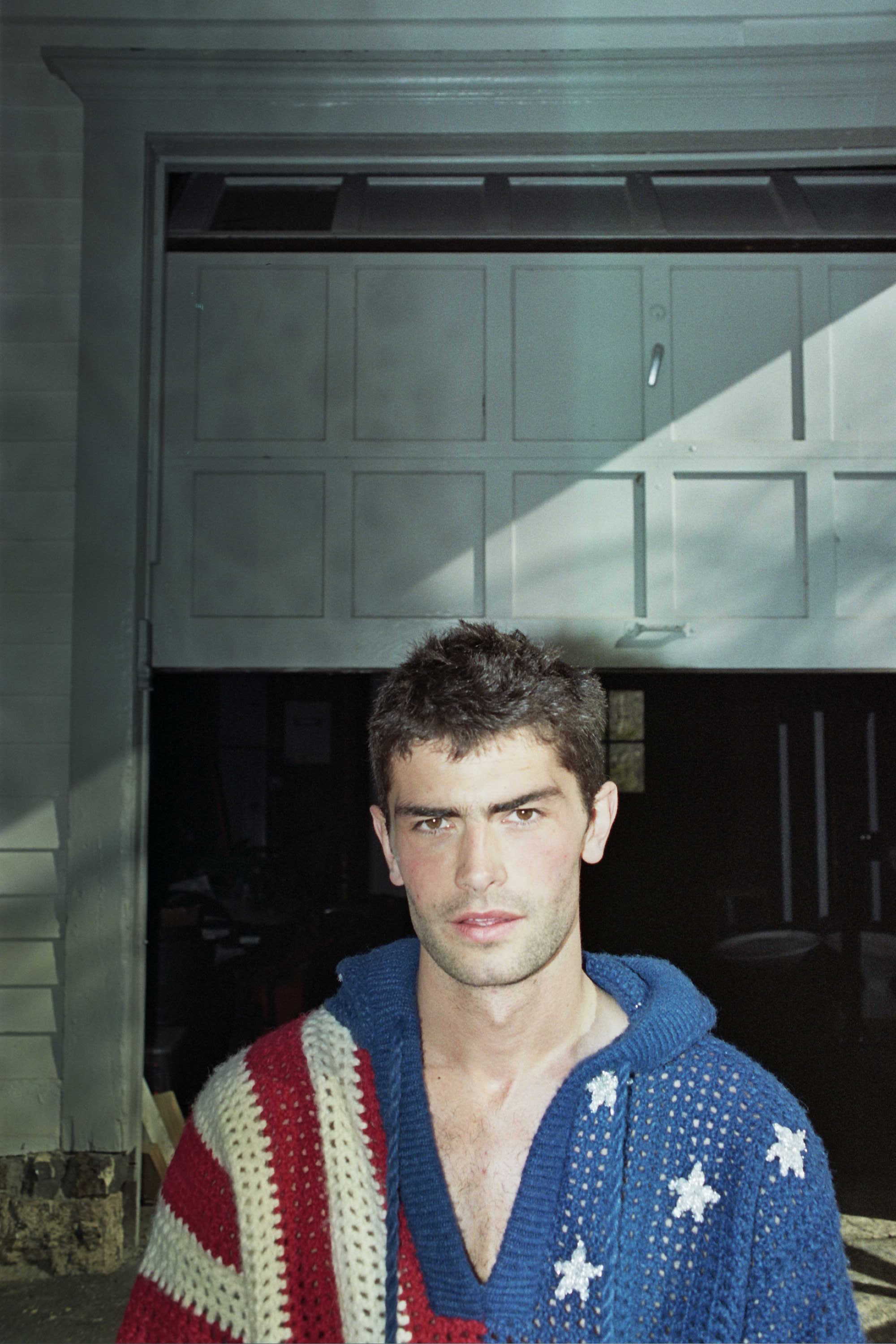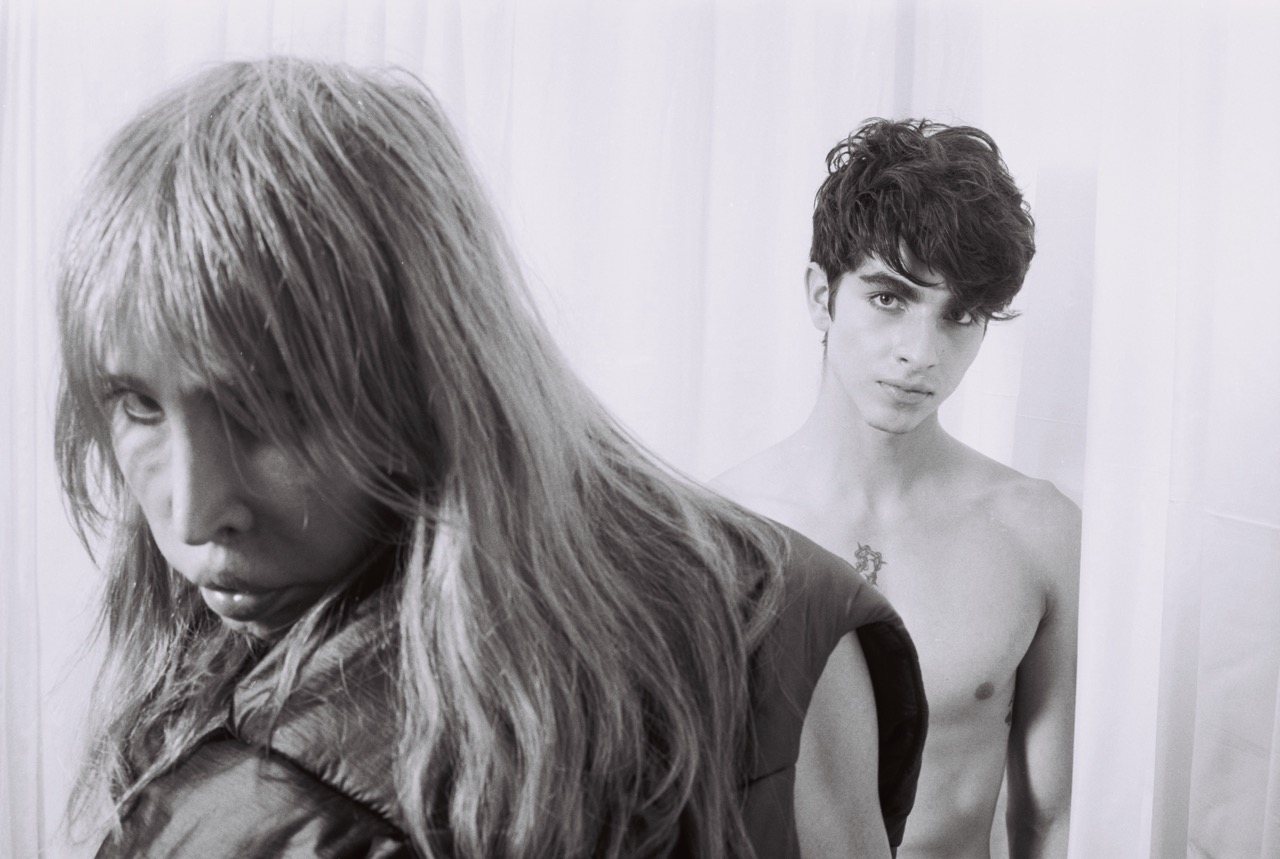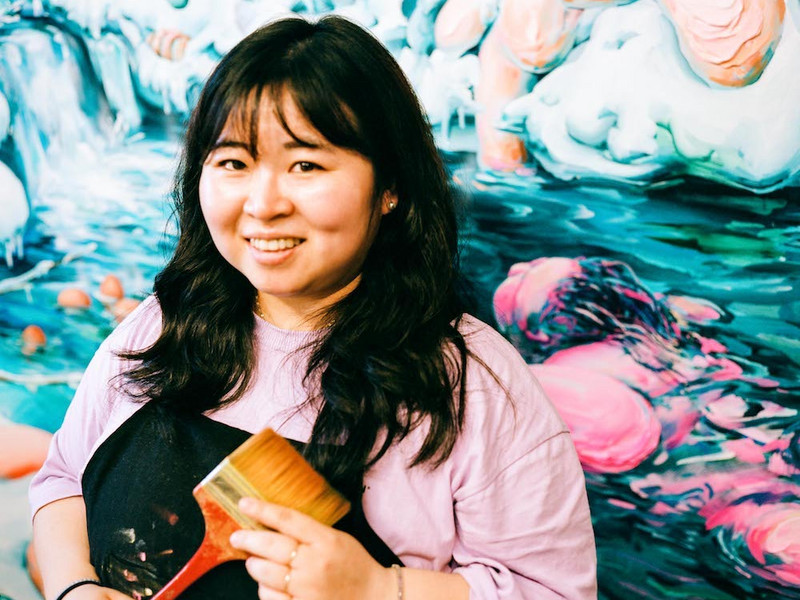Stanley Stellar and Alex Foxton on Cruising, Gay Folk Art, and OGs
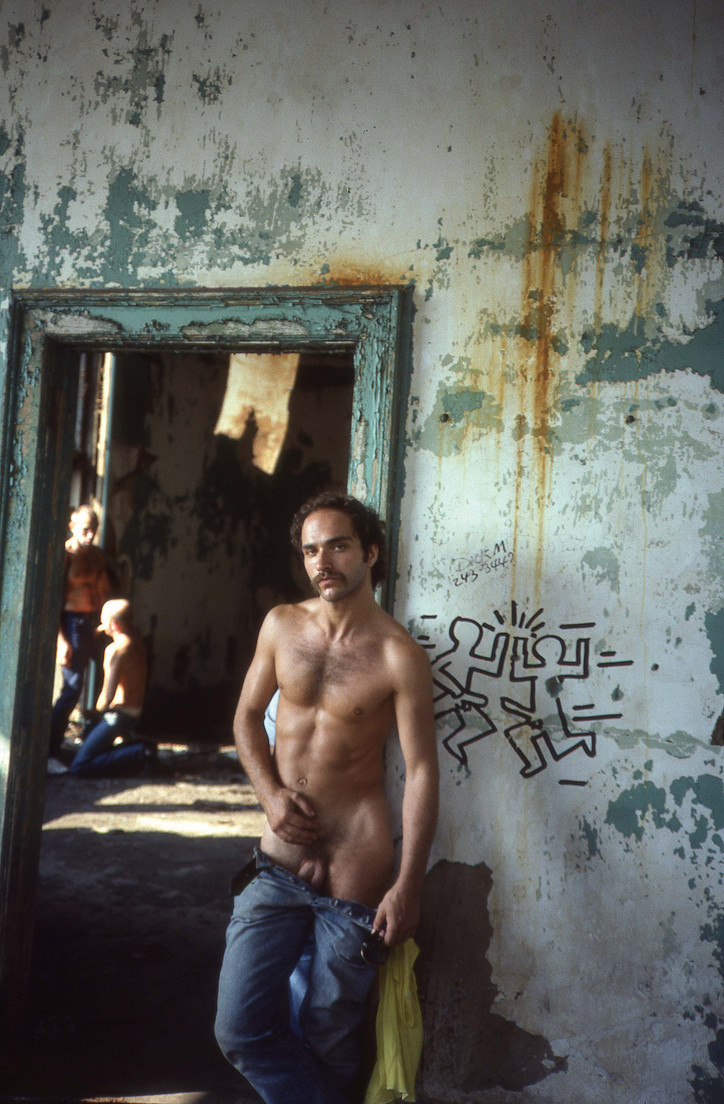
What set Stellar apart from contemporaries like Robert Mapplethorpe, who explored the intersections of BDSM culture and classical aesthetics, and Peter Hujar, who focused on intimate, contemplative portraits that conveyed a sense of quiet introspection, was his deeply personal connection to his community. His lens captured a broad spectrum of queer life—from the first Gay Pride parades to couples navigating the harsh realities of the HIV/AIDS epidemic, as well as underground pageants, leather competitions, and nightlife scenes like New York’s Mr. Leather contest. Two of his black-and-white photographs of a 1987 Mr. Leather competition were recently featured in the second iteration of Tulips at Kapp Kapp, celebrating the gallery’s fifth anniversary.
Stellar’s work exudes a sense of immediacy, revealing the inner lives of his subjects with a sense of shared experience and solidarity. His chronicling of early gay liberation has also attracted a long line of admirers. Among them is friend and painter Alex Foxton, whose debut U.S. solo exhibition at Kapp Kapp last year, Sunshower (after Stanley Stellar), paid homage to the photographer's impressive ouevre. Foxton’s exhibition featured fourteen major new paintings and a suite of works on paper that explore themes of freedom and creativity from the pre-HIV/AIDS era at The Piers, highlighting the lasting resonance of Stellar’s work with a new generation.
In light of Kapp Kapp's recent anniversary, Stellar and Foxton joined office to discuss their artistic practices, exploring themes of influence, legacy, and the evolving expressions of queer identity across different mediums.
Stanley Stellar— I was happy to see some of your current paintings, and that you’re still communicating a lot of the same things. I’m glad you didn’t fall asleep for the last year. But you have bars on your windows! That’s worse than New York, Jesus.
Alex Foxton— I know, I could take them off, but it’s too much work and I’m on the ground floor in a shady area of Paris. I’m not in the museum district.
SS— The only time I felt uneasy in Paris was at the famous flea market, which was also our escargot day, so I remember that.
AF— I’ve never been to that flea market, but I did go to the Clignancourt flea market a month ago. It was a lot. When are you coming to Paris?
SS— Everyone keeps suggesting that I visit Arles for the festival. I don’t really know what it is.
AF— Oh, the Rencontres d'Arles, it's a really great photography festival. I’ve been three times. It’s a beautiful town, famous for Van Gogh, he finished a lot of famous paintings there. But it’s a great town, really quiet, and the festival is amazing. You would win that; I think it usually runs from late August to September.
SS— I’ll contemplate it. So last night, I was thinking about how I would describe my reactions to your paintings, what would I say? That all led me to this word: "feeling." Feeling is what it is.
When the Kapp Kapp boys let me know me that they put these black-and-white pieces of mine in the Tulips show, I was indifferent, like, Oh, I don’t care because it wasn’t all about me, but when I went to the opening night, I was so happy to be in it. I was the only photographer alongside these painters, and I liked everything. To me, those two black & white photographs of the Mr. Leather contest are frozen in time. Time changes how the world views imagery of the past. Alex, what you do so vibrantly is interpret the same kind of gay symbolism in a free, open, and current way. When I look at your work, Alex, I see freedom within a framework I know and understand.
Recently, I saw one of your paintings based on one of my photos. I hadn't seen it in a year or more, and when I looked at it, I immediately thought, Oh, that's Alan Lynes. It was wonderful. I love that Alan Lynes lives on in that painting.
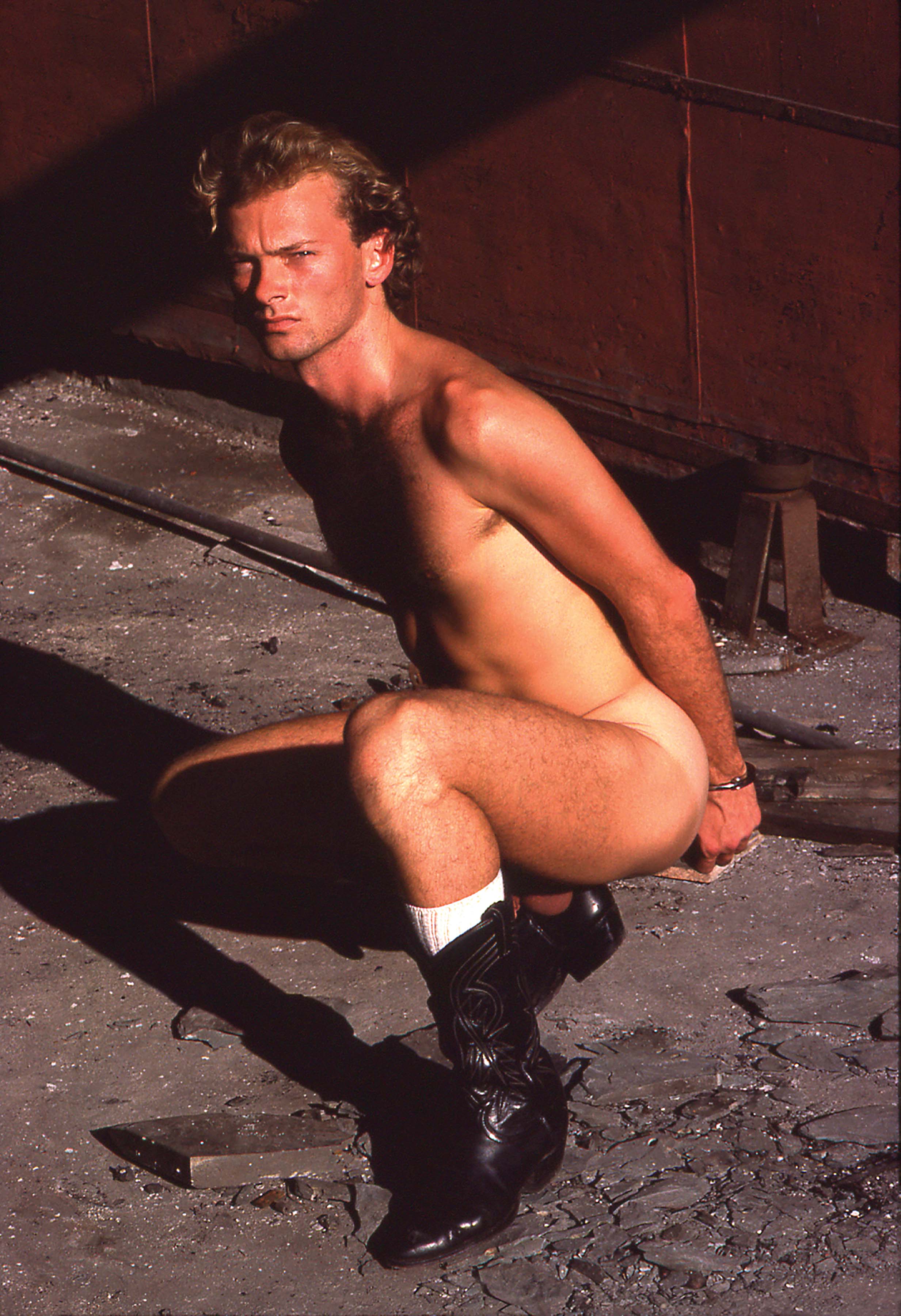
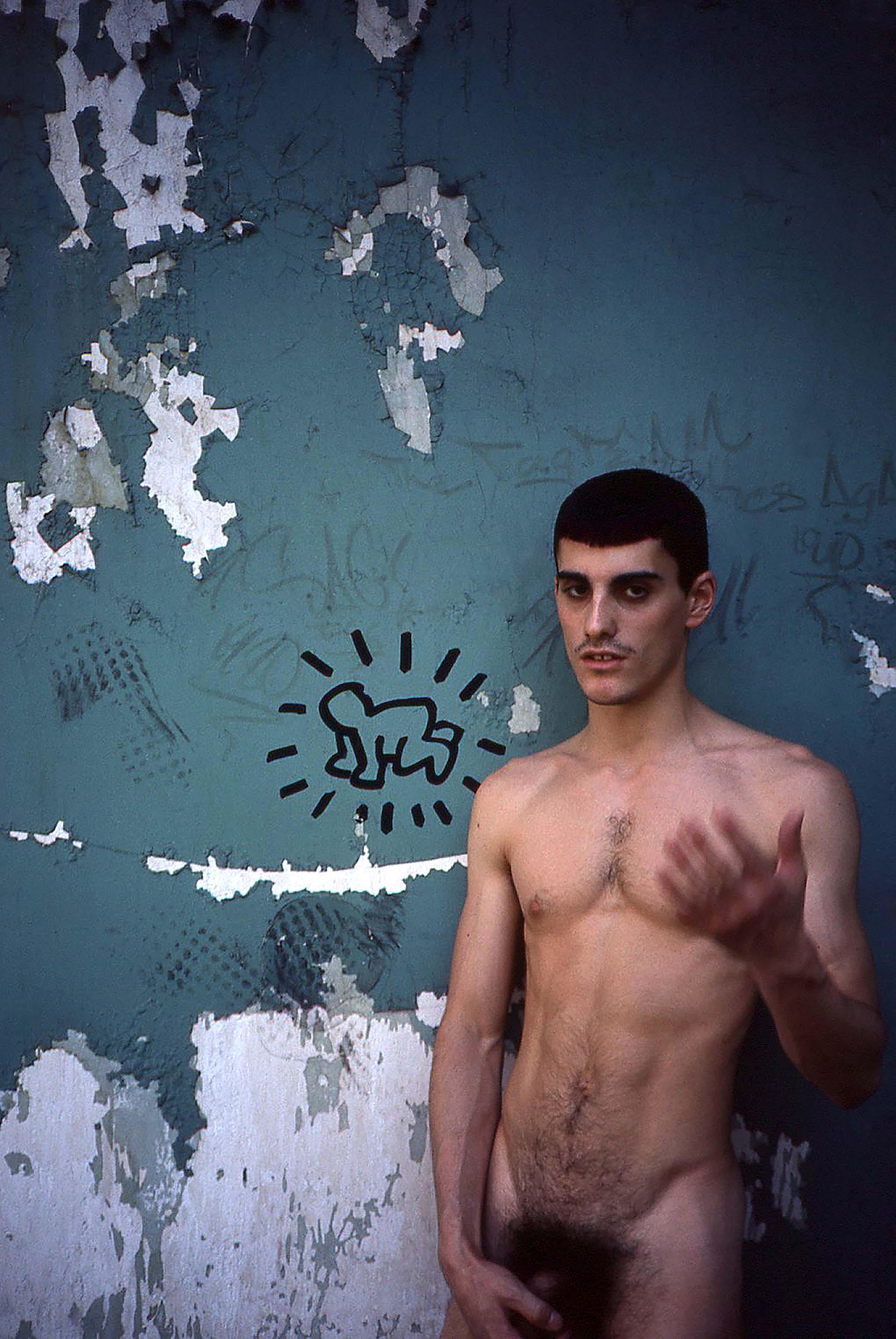
Alan Lynes, 1977
Rick Daccard II, 1981
AF— It's funny that you talk about feeling, because just before we got on the call, I was thinking about your work again. I thought about it a lot while I was painting, and the same word came to mind. Feeling, ambiance, atmosphere. That's what I get from your photographs, and it's what drew me to them in the first place. You have a way of communicating an atmosphere through the figure; it's not just a portrait but a sense of the time, space, and atmosphere around it. That's exactly what I want to do in my work. That's why I wanted to paint from those images, to move away from just portraiture to something more expressive — a body in a space that communicates a feeling. I think that's what you're brilliant at.
SS— I never really thought to ask myself if I’m the only one who knows about humanity. Maybe everyone has their own idea of humanity and that nobody else understands. It's interesting to see the symbolism in gay culture over time and what it means now. I was at the Mr. Leather contest as a journalistic photographer. It was a job; a newspaper sent me. I said yes because it was a nighttime event, and I knew everyone would be in leather or dressed up. I found that interesting at the time.
AF— Was that guy wearing a real uniform, or was it just theater?
SS— I think it was pure theater, but I've photographed real cops, including a gay cop and a highway patrol guy in uniform, which can be startling because it’s so real. As for leather in gay culture, it's quite removed from what it represented in 1987. I spend a lot of time on Instagram, where I see a few people trying to embody the spirit of gay leather. They often seem so off, but it's not my place to tell them if they're right or wrong, nor do I have the time or interest. However, the gap in these iconic gay cultural things surprises me.
I also notice that the words "gay" and "queer" are hot topics right now. I was discussing this with my model yesterday. I recently posted some gay pride pictures from around 1987 on Instagram, titled "When Pride was still just Gay Pride." It made me wonder if anyone even equates them anymore. I used to be happy about the unity, but now I'm a bit frustrated at the lack of acknowledgment of our cultural strength. I'm not naming names, but what the rest of LGBTQ+ is visually reproducing doesn't seem fresh or interesting to me.
AF— I remember us talking about how everything got very commercial at a certain point. It feels like the words "pride" and "queer" have been hijacked by companies so they don't have to say "gay," because, in the end, that particular word is still quite subversive and threatening. Saying "queer" and "pride" might just be more appealing to a broader audience.
I've been thinking about “inclusivity” as a strategy that ensures that systems don’t actually change — and in the case of commercialism, ensuring there is always a growing number of people to sell products to. As you said, Stanley, not even today's leather culture represents what it used to.
AF— Stanley, do you think it's the same, that leather culture’s become commercialized, like a sort of Disneyland?
SS— It feels like the current leather culture is just about selling harnesses and content, without heart, soul, smell, or feel. It's like, "Hey, buy this, put this on, and here you are." The humanity and feeling are missing.
So many things from gay culture, including humor, seem gone. Everyone's focus is on content, content, content. What isn't content nowadays? Content is everywhere. To be honest, I never thought we had much culture; it was secretive and sometimes scary to people. For example, I was afraid to walk into a leather bar for years because I wasn't part of that scene.
A heavy-duty leatherman said hello to me on Scruff yesterday. An old-world leatherman, the real deal. The first thing I asked was, "Did you read my profile?" because I don't even wear leather. I used to have a lot of leather accessories for photo shoots, but not for myself. I enjoy the fetish aspect of gay culture, as it's very individual and speaks to me in a unique way. It reminds me of the experiences, parties, events, and people I've known, along with the language around it. All that is missing now. I'm not planning a way to bring it back, but I don't know how it disappeared.
AF— I’d say that those subcultures do still exist, but it’s a lot more underground now. There's a leather club in Paris that's been around for years, but I'm not really into leather… the gay iconography interests me, but I would never dare go because it feels like a sacred subculture. You have to commit to it; there's a whole set of rules. It's like pretending to be a skateboarder without the skills. I couldn't just walk into a leather bar and say, "I'm into leather now." The commercial aspect has created an image of "leather gays" that doesn't necessarily reflect reality.
SS— It always brings me back to the word "feeling." In relation to what you do, Alex, you bring this gay cultural stuff right to the present moment. By abstracting it, you create something new, exciting, and filled with emotion.
AF— I'm touched that you say that. When I was thinking about doing the show that I based on your work, my aim was to deal with gay iconography and make it feel human again. I felt like we'd lost that, but I still find it in your images. You're still dealing with gay iconography and expressive bodies, capturing their humanity. That's exactly what I wanted to do: rediscover emotion and move beyond just creating sellable images to something more genuine.
SS— The word "shame" just came to mind. You were saying what you think I do now, and I want to add that there’s no shame with it at all. I am not hiding anything from anyone. I'm still celebrating my ability to relate to people as they are. I'm not trying to be Robert Mapplethorpe or anyone else. This is exactly who I am: authentic, New York City, the fucking old-GOAT Stanley. This is who I've always been, who I went to sleep with, this is who I was in the back of a truck with all the same people.
I used to really not want to admit it. I wanted to think that I was designing "gayness" through my vision, especially because it was often depicted as a joke. But I never felt like a joke, and I never felt that my friends were jokes either. Most of the gay world seems like a joke, and that’s who they think they are — if they buy something and put it on themselves, it’s like, Haha, now am I gay? And there’s more to it than that, what’s inside? What do you have here? [Points at his heart].
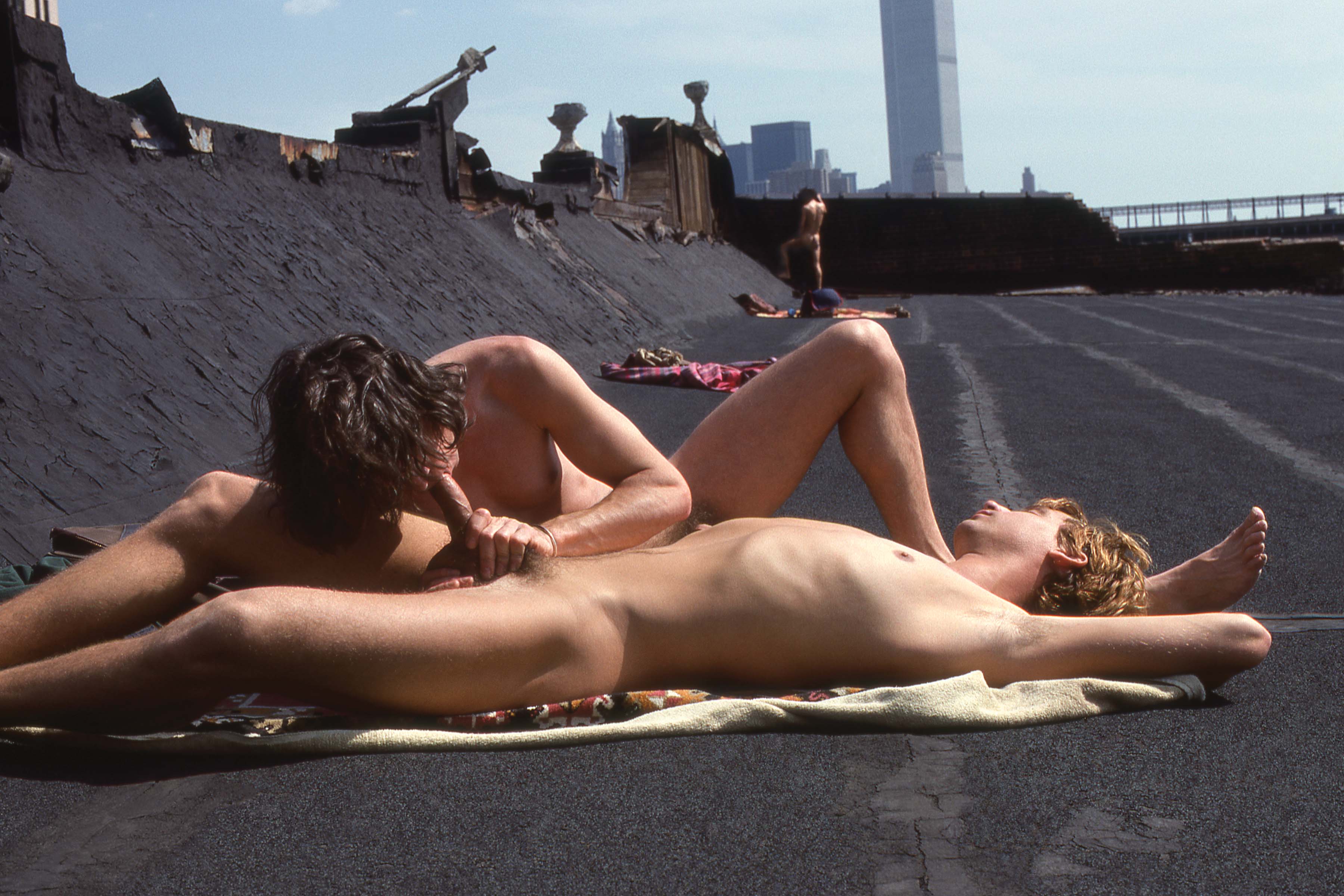
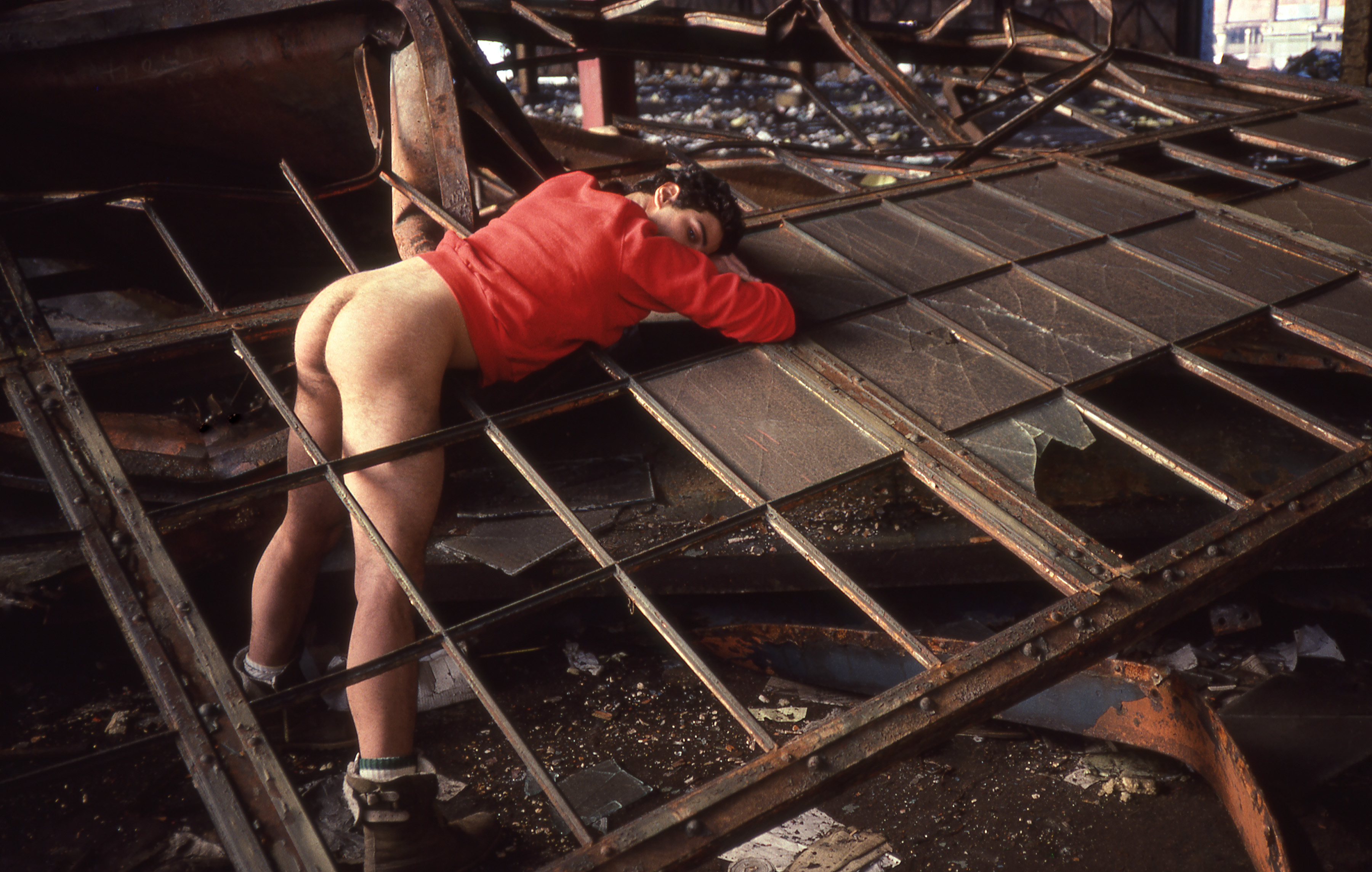
Piers May, 1977
Red II, 1984
Currently, more and more gay men seem to be on OnlyFans and similar websites, which feels like an extension of apps like Grindr and Scruff. It isn’t necessarily bad. I find the openness to public sexual expression fascinating and there are positives to it, but are we missing out on something more visceral?
SS— This is an incredible subject. I read today that X (formerly Twitter) has officially announced it welcomes all forms of pornography. All welcome, no matter what. I'm actually not on X, but I see obviously how sexualized it is. You might as well embrace it. I discovered Twitter a few years ago and realized it was like the porn central of the universe even then, to the point that I'd tell myself, No, I don't want to go there, because I'll get lost for two hours and don't want to do that. I can just jerk off in 15 minutes, but it's so fucking addictive.
What impresses me are the images some gay men create unknowingly. I take screenshots of videos that strike me, and then I’ll look at them, and it'll be fucking perfect. They’re not my images; they’re folk images, sexual folk images.
AF— It's true. I've been painting from old master paintings a lot recently but I'll also look at pornography, particularly nostalgic pornographic images, and these images have a directness that, while totally removed, communicates with you in the same way that an old master does. While I’m not comparing them to a Caravaggio, there is a familiar immediacy that grabs your attention and moves your eye across the page. The challenge for me is to use that impact to infuse the images I make with feeling and humanity, but there’s no denying the powerful graphic immediacy of these images.
SS— And I don’t think anyone is doing this consciously.
AF— No, not at all.
SS— Exactly, and since it's not conscious, you can say that these people are just creating primitive folk art; what gay men have always done, made art out of sex. It’s not about the act itself but about the art being made and it’s not surprising, except now it's spread across media, platforms, videos, and even AI, so people don’t recognize it.
Yeah, and it’s also quite normalized now. In the past, someone might have been fired for being publicly sexual, but today, it's common for people to have an OnlyFans while working a 9-5. Or you might know someone whose nudes are online, and it's no longer a big deal.
AF— Right, but now everything’s become a part of our profiles — what we buy, where we go, our friends. I miss the times when you had to go out and talk to someone, though it still happens. For me, meeting someone in person is still the most exciting way.
SS— It makes me think of how gay men used to meet — nothing was as abstract as it is now. Decisions were based on initial desire, interaction, and chemistry. You could smell and touch the person. Now it's reduced to text boxes. It frustrates me that we sell every part of ourselves, even the most private. It's not about subverting privacy or doing something kinky with someone anymore; it's about fan numbers and money. It's like bye-bye humanity. But of course, Alex, I'm sure there are places in Paris where you can still meet in this way; they have a better sense of that style.
AF— You have to come to Paris Stanley.
SS— Well, I know I have to come to Paris.
AF— And I agree with you. It's the age we live in. Everything has become commodified. Yet, there are still ways to connect genuinely, as your work shows and it is possible to maintain an authentic self even if it's hidden. That's what I look for in everyday life now, moments of actual connection.
SS— I enjoy my shooting so much now. It’s unusual for me. The guy who was here yesterday, I’ve known him for years. We’ve done three shoots together, and we finally reached a level of honesty where I could ask him to wear his cage on his dick and to also dress himself formally, as if sitting there in a suit. I actually see a lot of my studio work now as formal portraits — the secrets of the people I photograph woven into the visual design of how I perceive and love them. You know Sahir, I don’t say this to make you uncomfortable because I see there might be ink up that sleeve. Tattooing in gay men is one of my genres. It’s a subject not many people discuss articulately, but it’s huge for me. I could talk about my involvement, history, research, and the symbolism used by gay tattoo artists, and in their tattoos, to identify themselves for a long time.
AF— What was it exactly? Was there a word?
SS— Oh boy, that culture isn't even around anymore. I often mentioned it to the Leslie Longman Museum when I worked as their staff photographer for some years, and they didn't know what I was talking about. Or I'd show them some incredibly inked gay man, and it wouldn't interest them. They couldn't relate. Tattoos have always been seen as a fetishistic art form or a personal eroticization of one’s body.
Now it's almost the opposite. After five years of shooting with the guy I shot with yesterday, we've developed a shared language that only comes from deep comfort and trust between two gay men, which also allows the portrait to be vibrantly beautiful and alive. It's all about perception. I'm glad to perceive people in their sexual selves as just one part of who they are. Removing the sexual doesn't remove the essence of us, and you can never take it away from us either. It's not us if you take the sex away.
I’m feeling strong doing what I’ve always done, but it’s now more acknowledged and visible. The combination of sexuality and humanity is easier to see. The shift in how sexuality is sold and discussed is now more familiar to people, but it’s not my world anymore. I mean, I have a good life, maybe better than ever right now, but I don't know when it was that the world shifted. Everything I learned growing up is just OG. That's what 20-year-olds are calling me — the OG, or the old gay. Do you know that phrase?
AF— [Laughs] I didn't think of OG as old gay, but I love that.
SS— Well, what did you think of it as? What is it?
[Laughs] I know OG as 'original gangster', but I like old gay better now.
AF— And then GOAT is the greatest of all time, which you are Stanley.
SS— I was shocked when someone first said that to me actually, that I was the GOAT — I'm a Capricorn so that fits — but to be considered "greatest", I'm just used to being thought less of, not more of.
AF— No, no. Stanley you are the GOAT.
SS— Well that's just part of my struggles and history, my own understanding of being in junior high school in New York City and feeling alone, wondering who else was there with me and how they were reacting to me or ignoring me.
AF— Right, how is it that we find each other?
SS— I think we could do a better job.
AF— This makes me think of what you said earlier about seeing freedom in my work, which I also see in yours. We grow up feeling hemmed in, trapped in our own little cages, trying not to draw too much attention or make any loud “faggy noises.”
Once we break free from that, we’re left with the opportunity to celebrate our newfound freedom and express it as fully as we can. That’s what I strive to do in my work. Though I’m not naturally gregarious, I find that I can express that freedom through my art.
SS— I ask everybody I photograph to tell me a story. Generally, people either freeze at that idea or tell me a story that often leads them back to their coming-out experiences. Everybody has their own version of it. I've always wondered why we don't embrace and love each other more than we do, why so much of our interaction is based on whether we want to have sex with each other.
I remember being in junior high school, there was another gay person, and wondering why, as the only two there, he wouldn't talk to me. And he never did. Could it have been my sneakers? Something else?
My history as a homosexual in the mid to late 20th century is loaded, and it hasn't faded away for me. It comes up everytime I shoot someone. I know that many of the men who've walked into my studio have never had the opportunity to be as honest and open as they can be there with me, which is why my photographs turn out the way they do.
AF— You do have a way of putting people at their ease. I remember that.
SS— I'd say that's because I see us for who we are. Our secret is often our beauty. Do you think that I don't love both of you right now? In a way, you're my future and I am glad to see you both so alive. And I’m not saying that lightly. I think we've laughed at ourselves more than we've acknowledged each other. I've been fighting that all my life. I’m so glad to have these portraits of these humans who are our history, who we could understand and hold hands with, and could so easily vanish. Unlike heterosexuals who have children and families that continue and continue, we don’t tend to do that. I am happy to have caught us in our most beautiful moments. That’s always been my goal here. I don’t want to be more than any of my dead friends wanted to be. And if we can't remember each other, we can't expect others to remember us. It’s important to see our own cultural evolution and humanity through less abstract, more visceral, one-to-one interactions. Unfortunately, the world isn’t going in that direction. Looking at both of you fills me with joy. It’s free, beautiful, elemental. I want my photos to convey that — so you can feel, smell, and breathe with the subjects.
AF— I think we are just a bit afraid of desire. X is full of naked bodies, but is it actually a reflection of desire? I’m not sure. We’re still not fully engaging with it.
SS— No, it's commerce man.
It's a product. You can't desire a product in the same way that you desire another person.
SS— You don't satisfy the desire either.
AF— Exactly, maybe you're satisfied for 10 seconds, but then it comes back. It's constant, even if it's not always conscious. We're always dealing with it, so why are we so afraid of it? I've felt nostalgic for earlier times, and I used to be embarrassed by that because it seemed unmodern. Now I see it as a force for good, what do you think Stanley? Are you nostalgic, and do you see it as positive?
SS— I have learned to see nostalgia as a marketing tool. Advertising agencies have used nostalgia forever. When people say they wish they were around in the past, I think, No, you don't. It wasn't a golden age of love and harmony. We faced public condemnation and STDs just like today. Marsha P. Johnson, with her "pay them no mind" attitude was incredible for that reason.
I don’t have nostalgia for the past. It would be nice to have my youth back, a flatter stomach, my dick harder and so on, but I’m more empowered now than I've ever been in my life. I’m so fucking comfortable with myself and I want to pass that on. I have a friend that's 28 and I feel that's my role with him.
When I was 28, I wasn’t interested in knowing anyone my age. It’s tough for us to have some kind of cultural unity amongst ourselves. I’ve always wanted to understand what it means to be a gay man, what life entails. I knew I never wanted to do drag, that just didn't speak to me, I didn't want to be Priscilla, Queen of the Desert. I wanted men to teach me how to be a man. That’s elusive. It’s not easy. I’ve been looking at us one by one for ages, trying to figure it out, and helping others figure it out too, so they don’t feel confined by the stereotypes we’re given.
AF— Well thank you, Stanley, truly. It's always great to talk with you.
SS— And you, I'm happy we spent the time. I love you both and I miss you, Alex. I might have to take Paris later this summer seriously. And Sahir, I'm happy to know that you exist.

